Douglas Hofstadter
description: an American professor known for his work on consciousness, artificial intelligence, and the book 'Gödel, Escher, Bach'
87 results

Artificial Intelligence: A Guide for Thinking Humans
by
Melanie Mitchell
Published 14 Oct 2019
Kansky et al., “Schema Networks: Zero-Shot Transfer with a Generative Causal Model of Intuitive Physics,” in Proceedings of the International Conference on Machine Learning (2017), 1809–18. 11. A. A. Rusu et al., “Progressive Neural Networks,” arXiv:1606.04671 (2016). 12. Marcus, “Deep Learning.” 13. Quoted in N. Sonnad and D. Gershgorn, “Q&A: Douglas Hofstadter on Why AI Is Far from Intelligent,” Quartz, Oct. 10, 2017, qz.com/1088714/qa-douglas-hofstadter-on-why-ai-is-far-from-intelligent. 14. I should note that a few robotics groups have actually developed dishwasher-loading robots, though none of these was trained by reinforcement learning, or any other kind of machine-learning method, as far as I know.
…
I had been working on various aspects of AI since graduate school in the 1980s and had been tremendously impressed by what Google had accomplished. I also thought I had some good ideas to contribute. But I have to admit that I was there only as a tagalong. The meeting was happening so that a group of select Google AI researchers could hear from and converse with Douglas Hofstadter, a legend in AI and the author of a famous book cryptically titled Gödel, Escher, Bach: an Eternal Golden Braid, or more succinctly, GEB (pronounced “gee-ee-bee”). If you’re a computer scientist, or a computer enthusiast, it’s likely you’ve heard of it, or read it, or tried to read it. Written in the 1970s, GEB was an outpouring of Hofstadter’s many intellectual passions—mathematics, art, music, language, humor, and wordplay, all brought together to address the deep questions of how intelligence, consciousness, and the sense of self-awareness that each human experiences so fundamentally can emerge from the non-intelligent, nonconscious substrate of biological cells.
…
In the early 1980s, after graduating from college with a math degree, I was living in New York City, teaching math in a prep school, unhappy, and casting about for what I really wanted to do in life. I discovered GEB after reading a rave review in Scientific American. I went out and bought the book immediately. Over the next several weeks, I devoured it, becoming increasingly convinced that not only did I want to become an AI researcher but I specifically wanted to work with Douglas Hofstadter. I had never before felt so strongly about a book, or a career choice. At the time, Hofstadter was a professor in computer science at Indiana University, and my quixotic plan was to apply to the computer science PhD program there, arrive, and then persuade Hofstadter to accept me as a student.

The Psychopath Test: A Journey Through the Madness Industry
by
Jon Ronson
Published 12 May 2011
“So if Levi Shand doesn’t exist,” I said, “who created him?” “I think they’re all Hofstadter,” said Deborah. “Levi Shand. Petter Nordlund. I think they’re all Douglas Hofstadter.” I went for a walk through Gothenburg, feeling quite annoyed and disappointed that I’d been hanging around here for days when the culprit was probably an eminent professor some four thousand miles away at Indiana University. Deborah had offered me supplementary circumstantial evidence to back her theory that the whole puzzle was a product of Douglas Hofstadter’s impish mind. It was, she said, exactly the sort of playful thing he might do. And being the author of an international bestseller, he would have the financial resources to pull it off.
…
It was a compelling theory, and I continued to believe this might be the solution to the riddle right up until the moment, an hour later, I had a Skype video conversation with Levi Shand, who, it was soon revealed, wasn’t an invention of Douglas Hofstadter’s but an actual student from Indiana University. He was a handsome young man with black hair, doleful eyes, and a messy student bedroom. He had been easy to track down. I e-mailed him via his Facebook page. He got back to me straightaway (he’d been online at the time) and within seconds we were face-to-face. He told me it was all true. He really did find the books in a box under a railway viaduct and Douglas Hofstadter really did have a harem of French women living at his home. “Tell me exactly what happened when you visited him,” I said.
…
A note at the beginning claimed that the manuscript had been “found” in the corner of an abandoned railway station: “It was lying in the open, visible to all, but I was the only one curious enough to pick it up.” What followed were elliptical quotations:My thinking is muscular. Albert Einstein I am a strange loop. Douglas Hofstadter Life is meant to be a joyous adventure. Joe K The book had only twenty-one pages with text, but some pages contained just one sentence. Page 18, for instance, read simply: “The sixth day after I stopped writing the book I sat at B’s place and wrote the book.” And all of this was very expensively produced, using the highest-quality paper and inks—there was a full-color, delicate reproduction of a butterfly on one page—and the endeavor must have cost someone or a group of people an awful lot of money.
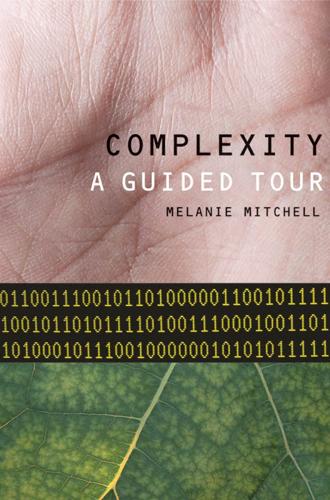
Complexity: A Guided Tour
by
Melanie Mitchell
Published 31 Mar 2009
Complexity: a guided tour/Melanie Mitchell. p. cm. Includes bibliographical references and index. ISBN 978-0-19-512441-5 1. Complexity (Philosophy) I. Title. Q175.32.C65M58 2009 501—dc22 2008023794 9 8 7 6 5 4 3 2 1 Printed in the United States of America on acid-free paper To Douglas Hofstadter and John Holland CONTENTS Preface Acknowledgments PART ONE Background and History CHAPTER ONE What Is Complexity? CHAPTER TWO Dynamics, Chaos, and Prediction CHAPTER THREE Information CHAPTER FOUR Computation CHAPTER FIVE Evolution CHAPTER SIX Genetics, Simplified CHAPTER SEVEN Defining and Measuring Complexity PART TWO Life and Evolution in Computers CHAPTER EIGHT Self-Reproducing Computer Programs CHAPTER NINE Genetic Algorithms PART THREE Computation Writ Large CHAPTER TEN Cellular Automata, Life, and the Universe CHAPTER ELEVEN Computing with Particles CHAPTER TWELVE Information Processing in Living Systems CHAPTER THIRTEEN How to Make Analogies (if You Are a Computer) CHAPTER FOURTEEN Prospects of Computer Modeling PART FOUR Network Thinking CHAPTER FIFTEEN The Science of Networks CHAPTER SIXTEEN Applying Network Science to Real-World Networks CHAPTER SEVENTEEN The Mystery of Scaling CHAPTER EIGHTEEN Evolution, Complexified PART FIVE Conclusion CHAPTER NINETEEN The Past and Future of the Sciences of Complexity Notes Bibliography Index PREFACE REDUCTIONISM is the most natural thing in the world to grasp.
…
CHAPTER TWO Dynamics, Chaos, and Prediction CHAPTER THREE Information CHAPTER FOUR Computation CHAPTER FIVE Evolution CHAPTER SIX Genetics, Simplified CHAPTER SEVEN Defining and Measuring Complexity PART TWO Life and Evolution in Computers CHAPTER EIGHT Self-Reproducing Computer Programs CHAPTER NINE Genetic Algorithms PART THREE Computation Writ Large CHAPTER TEN Cellular Automata, Life, and the Universe CHAPTER ELEVEN Computing with Particles CHAPTER TWELVE Information Processing in Living Systems CHAPTER THIRTEEN How to Make Analogies (if You Are a Computer) CHAPTER FOURTEEN Prospects of Computer Modeling PART FOUR Network Thinking CHAPTER FIFTEEN The Science of Networks CHAPTER SIXTEEN Applying Network Science to Real-World Networks CHAPTER SEVENTEEN The Mystery of Scaling CHAPTER EIGHTEEN Evolution, Complexified PART FIVE Conclusion CHAPTER NINETEEN The Past and Future of the Sciences of Complexity Notes Bibliography Index PREFACE REDUCTIONISM is the most natural thing in the world to grasp. It’s simply the belief that “a whole can be understood completely if you understand its parts, and the nature of their ‘sum.’ ” No one in her left brain could reject reductionism. —Douglas Hofstadter, Gödel, Escher, Bach: an Eternal Golden Braid REDUCTIONISM HAS BEEN THE DOMINANT approach to science since the 1600s. René Descartes, one of reductionism’s earliest proponents, described his own scientific method thus: “to divide all the difficulties under examination into as many parts as possible, and as many as were required to solve them in the best way” and “to conduct my thoughts in a given order, beginning with the simplest and most easily understood objects, and gradually ascending, as it were step by step, to the knowledge of the most complex.”1 Since the time of Descartes, Newton, and other founders of the modern scientific method until the beginning of the twentieth century, a chief goal of science has been a reductionist explanation of all phenomena in terms of fundamental physics.
…
Influenced by the early pioneers of computation, I felt that computation as an idea goes much deeper than operating systems, programming languages, databases, and the like; the deep ideas of computation are intimately related to the deep ideas of life and intelligence. At Michigan I was lucky enough to be in a department in which “computation in natural systems” was as much a part of the core curriculum as software engineering or compiler design. In 1989, at the beginning of my last year of graduate school, my Ph.D. advisor, Douglas Hofstadter, was invited to a conference in Los Alamos, New Mexico, on the subject of “emergent computation.” He was too busy to attend, so he sent me instead. I was both thrilled and terrified to present work at such a high-profile meeting. It was at that meeting that I first encountered a large group of people obsessed with the same ideas that I had been pondering.
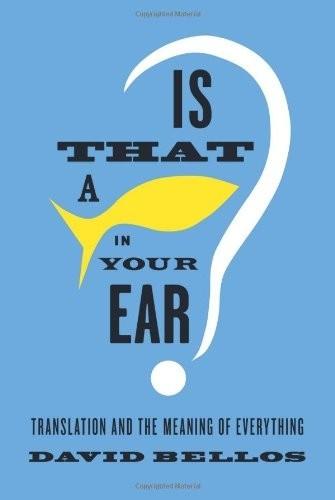
Is That a Fish in Your Ear?: Translation and the Meaning of Everything
by
David Bellos
Published 10 Oct 2011
Finding out what translation has done in the past and does today, finding out what people have said about it and why, finding out whether it is one thing or many—these inquiries take us far and wide, to Sumer, Brussels, and Beijing, to comic books and literary classics, and into the fringes of disciplines as varied as anthropology, linguistics, and computer science. What translation does raises so many answerable questions that we can leave the business of what it is to the side for quite some time. ONE What Is a Translation? Douglas Hofstadter took a great liking to this short poem by the sixteenth-century French wit Clément Marot: Ma mignonne, Je vous donne Le bon jour; Le séjour C’est prison. Guérison Recouvrez, Puis ouvrez Votre porte Et qu’on sorte Vitement, Car Clément Le vous mande. Va, friande De ta bouche, Qui se couche En danger Pour manger Confitures; Si tu dures Trop malade, Couleur fade Tu prendras, Et perdras L’embonpoint.
…
In a world where you can check the translation against the original, even when it has the form of speech (thanks to the sound-recording devices we have used for the past one hundred years), the principal grounds for the fear and mistrust of linguistic intermediaries that is endemic to oral societies no longer exist. Yet people go on saying traduttore/traditore, believing they have said something meaningful about translation. A thoughtful translator such as Douglas Hofstadter still feels he needs to counter it with a pun in the title of an essay, “Trader/Translator.” 15 We may now live in a sophisticated, wealthy, technologically advanced society—but when it comes to translation, some people seem to be stuck in the age of the clepsydra. Traditional mistrust of oral interpreters in the Middle East affected Western tourists when visits to the region became practical and prestigious for individuals in the nineteenth century.
…
Few poets write sublime verse every time. But it stands to reason that the quality of a poem in translation has no relation to its having been translated. It is the sole fruit of the poet’s skill as a poet, irrespective of whether he is also writing as a translator. You may not like the poem by Douglas Hofstadter quoted at the start of this book. You may like the poem by Clément Marot much more. But all that you could reasonably say about the difference is that Hofstadter is (in this instance) a less charming writer of poetry than Marot. If you didn’t know that Hofstadter’s trisyllabic verse transposes sentiments first expressed by someone else in a form that has a quite strict relationship to it, you might still not like it—but you wouldn’t think of justifying your disappointment by saying that poetry is what has been lost in translation.
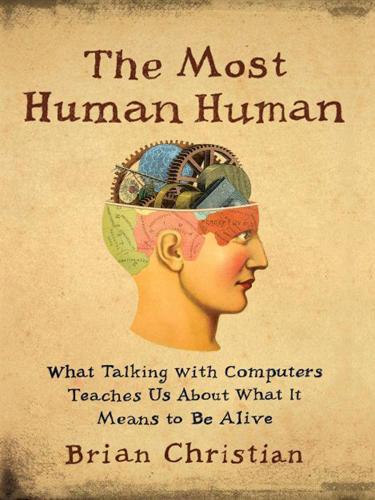
The Most Human Human: What Talking With Computers Teaches Us About What It Means to Be Alive
by
Brian Christian
Published 1 Mar 2011
For instance, are artists more valuable to us than they were before we discovered how difficult art is for computers? Last, we might ask ourselves: Is it appropriate to allow our definition of our own uniqueness to be, in some sense, reactionary to the advancing front of technology? And why is it that we are so compelled to feel unique in the first place? “Sometimes it seems,” says Douglas Hofstadter, “as though each new step towards AI, rather than producing something which everyone agrees is real intelligence, merely reveals what real intelligence is not.” While at first this seems a consoling position—one that keeps our unique claim to thought intact—it does bear the uncomfortable appearance of a gradual retreat, the mental image being that of a medieval army withdrawing from the castle to the keep.
…
All the Beauty of Art At one point in his career, the famous twentieth-century French artist Marcel Duchamp gave up art, in favor of something he felt was even more expressive, more powerful: something that “has all the beauty of art—and much more.” It was chess. “I have come to the personal conclusion,” Duchamp wrote, “that while all artists are not chess players, all chess players are artists.” The scientific community, by and large, seemed to agree with that sentiment. Douglas Hofstadter’s 1980 Pulitzer Prize–winning Gödel, Escher, Bach, written at a time when computer chess was over twenty-five years old, advocates “the conclusion that profoundly insightful chess-playing draws intrinsically on central facets of the human condition.” “All of these elusive abilities … lie so close to the core of human nature itself,” Hofstadter says, that computers’ “mere brute-force … [will] not be able to circumvent or shortcut that fact.”
…
Most people were divided between two conclusions: (1) accept that the human race was done for, that intelligent machines had finally come to be and had ended our supremacy over all creation (which, as you can imagine, essentially no one was prepared to do), or (2) what most of the scientific community chose, which was essentially to throw chess, the game Goethe called “a touchstone of the intellect,” under the bus. The New York Times interviewed the nation’s most prominent thinkers on AI immediately after the match, and our familiar Douglas Hofstadter, seeming very much the tickled corpse, says, “My God, I used to think chess required thought. Now, I realize it doesn’t.” Other academics seemed eager to kick chess when it was down. “From a purely mathematical point of view, chess is a trivial game,” says philosopher and UC Berkeley professor John Searle.

A World Without Work: Technology, Automation, and How We Should Respond
by
Daniel Susskind
Published 14 Jan 2020
,” Wall Street Journal, 23 February 2011. 10. Douglas Hofstadter, Gödel, Escher, Bach: An Eternal Golden Braid (London: Penguin, 2000), p. 601: “There is a related ‘Theorem’ about progress in AI: once some mental function is programmed, people soon cease to consider it as an essential ingredient of ‘real thinking.’ The ineluctable core of intelligence is always in that next thing which hasn’t yet been programmed. This ‘Theorem’ was first proposed to me by Larry Tesler, so I call it Tesler’s Theorem: ‘AI is whatever hasn’t been done yet.’” 11. Hofstadter, Gödel, Escher, Bach, p. 678. 12. Douglas Hofstadter, “Staring Emmy Straight in the Eye—And Doing My Best Not to Flinch” in David Cope, ed., Virtual Music: Computer Synthesis of Musical Style (London: MIT Press, 2004), p. 34. 13.
…
From a practical point of view, it may have been an appealing idea for AI researchers. If human beings were only complicated computers, the difficulty of building an artificial intelligence was not insurmountable: the researchers merely had to make their own, simple computers more sophisticated.20 As the computer scientist Douglas Hofstadter puts it in his celebrated Gödel, Escher, Bach, it was an “article of faith” for many researchers that “all intelligences are just variations on a single theme; to create true intelligence, AI workers will have to keep pushing … closer and closer to brain mechanisms, if they wish their machines to attain the capabilities which we have.”21 Of course, not everyone was interested in copying human beings.
…
AI researchers, economists, and many others would be caught out, time and time again, by the capabilities of new machines that were no longer built to copy some supposedly indispensable feature of human intelligence. A SENSE OF DISAPPOINTMENT For an influential group of critics in the AI community, the pragmatist revolution is more a source of disappointment than a cause for celebration. Take their response to the chess triumph of IBM’s Deep Blue over Garry Kasparov. Douglas Hofstadter, the computer scientist and writer, called its first victory “a watershed event” but dismissed it as something that “doesn’t have to do with computers becoming intelligent.”4 He had “little intellectual interest” in IBM’s machine because “the way brute-force chess programs work doesn’t bear the slightest resemblance to genuine human thinking.”5 John Searle, the philosopher, dismissed Deep Blue as “giving up on A.I.”6 Kasparov himself effectively agreed, writing off the machine as a “$10 million alarm clock.7 Or take Watson, another IBM computer system.
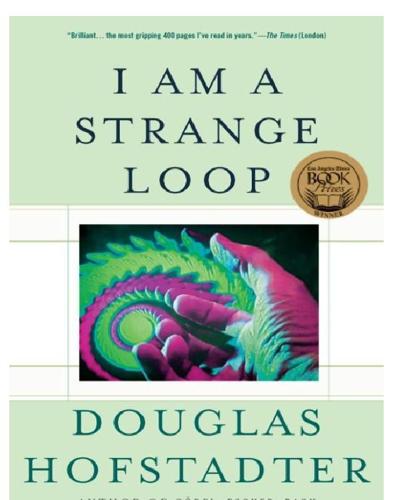
I Am a Strange Loop
by
Douglas R. Hofstadter
Published 21 Feb 2011
In other words, although he doesn’t propose anything that would smack of mathematics, Parfit essentially proposes an abstract “distance function” (what mathematicians would call a “metric”) between personalities in “personality space” (or between brains, although at what structural level brains would have to be described in order for this “distance calculation” to take place is never specified, and it is hard to imagine what that level might be). Using such a mind-to-mind metric, I would be very “close” to the person I was yesterday, slightly less close to the person I was two days ago, and so forth. In other words, although there is a great degree of overlap between the individuals Douglas Hofstadter today and Douglas Hofstadter yesterday, they are not identical. We nonetheless standardly (and reflexively) choose to consider them identical because it is so convenient, so natural, and so easy. It makes life much simpler. This convention allows us to give things (both animate and inanimate) fixed names and to talk about them from one day to the next without constantly having to update our lexicon.
…
But knee-jerk reflex or not, the truth of the matter is that there is no thing called “I” — no hard marble, no precious yolk protected by a Cartesian eggshell — there are just tendencies and inclinations and habits, including verbal ones. In the end, we have to believe both Douglas Hofstadters as they say, “This one here is me,” at least to the extent that we believe the Douglas Hofstadter who is right now sitting in his study typing these words and saying to you in print, “This one here is me.” Saying this and insisting on its truth is just a tendency, an inclination, a habit — in fact, a knee-jerk reflex — and it is no more than that, even though it seems to be a great deal more than that.
…
And indeed, it is impossible to come away from this book without having introduced elements of his point of view into our own. It may not make us kinder or more compassionate, but we will never look at the world, inside or out, in the same way again.” — Los Angeles Times Book Review “Nearly thirty years after his best-selling book Gödel, Escher, Bach, cognitive scientist and polymath Douglas Hofstadter has returned to his extraordinary theory of self.” — New Scientist “I Am a Strange Loop is thoughtful, amusing and infectiously enthusiastic.” — Bloomberg News “[P]rovocative and heroically humane . . . it’s impossible not to experience this book as a tender, remarkably personal and poignant effort to understand the death of his wife from cancer in 1993 — and to grasp how consciousness mediates our otherwise ineffable relationships.
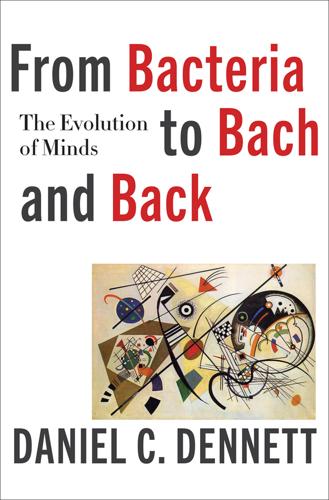
From Bacteria to Bach and Back: The Evolution of Minds
by
Daniel C. Dennett
Published 7 Feb 2017
Evolving robots on the macroscale have also achieved some impressive results in very simplified domains, and I have often spoken about the work in evolutionary robotics by Inman Harvey and Phil Husbands at Sussex (e.g., Harvey et al. 1997), but I have not discussed it in print. 383David Cope. Cope’s Virtual Music (2001) includes essays by Douglas Hofstadter, composers, musicologists, and me: “Collision Detection, Muselot, and Scribble: Some Reflections on Creativity.” The essays are filled with arresting observations and examples, and the volume includes many musical scores and comes with a CD. 384substrate-neutral. See DDI (1995) on substrate neutrality. 385analogizers. See also Douglas Hofstadter’s many works on the importance of analogy finding, especially Metamagical Themas (1985), Fluid Concepts and Creative Analogies (1995), and Surfaces and Essences: Analogy as the Fuel and Fire of Thinking, coauthored with Emmanuel Sander (first published in French as L’Analogie.
…
This love of mystery is just one of the potent imagination-blockers standing in our way as we attempt to answer the question of how come there are minds, and, as I already warned, our path will have to circle back several times, returning to postponed questions that couldn’t be answered until we had a background that couldn’t be provided until we had the tools, which couldn’t be counted on until we knew where they came from, a cycle that gradually fills in the details of a sketch that won’t be convincing until we can reach a vantage point from which we can look back and see how all the parts fit together. Douglas Hofstadter’s book, I Am a Strange Loop (2007), describes a mind composing itself in cycles of processing that loop around, twisting and feeding on themselves, creating exuberant reactions to reflections to reminders to reevaluations that generate novel structures: ideas, fantasies, theories, and, yes, thinking tools to create still more.
…
The relative triviality of copy editing, and yet its unignorable importance in shaping the final product, gets well represented in terms of our metaphor of Design Space, where every little bit of lifting counts for something, and sometimes a little bit of lifting moves you to a whole new trajectory. As usual, we may quote Ludwig Mies van der Rohe at this juncture: “God is in the details.” Now let’s turn the knobs on our thought experiment, as Douglas Hofstadter has recommended (1981) and look at the other extreme, in which Dr. Frankenstein leaves most of the work to Spakesheare. The most realistic scenario would be that Spakesheare has been equipped by Dr. Frankenstein with a virtual past, a lifetime stock of pseudo-memories of experiences on which to draw while responding to its Frankenstein-installed obsessive desire to write a play.
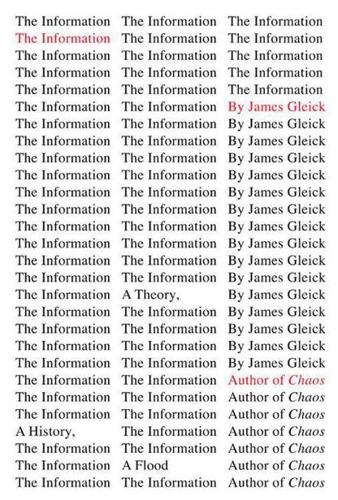
The Information: A History, a Theory, a Flood
by
James Gleick
Published 1 Mar 2011
In real life, all Cretans cannot be liars. Even liars often tell the truth. The pain begins only with the attempt to build an airtight vessel. Russell and Whitehead aimed for perfection—for proof—otherwise the enterprise had little point. The more rigorously they built, the more paradoxes they found. “It was in the air,” Douglas Hofstadter has written, “that truly peculiar things could happen when modern cousins of various ancient paradoxes cropped up inside the rigorously logical world of numbers,… a pristine paradise in which no one had dreamt paradox might arise.”♦ One was Berry’s paradox, first suggested to Russell by G.
…
The paradoxes were back, nor were they mere quirks. Now they struck at the core of the enterprise. It was, as Gödel said afterward, an “amazing fact”—“that our logical intuitions (i.e., intuitions concerning such notions as: truth, concept, being, class, etc.) are self-contradictory.”♦ It was, as Douglas Hofstadter says, “a sudden thunderbolt from the bluest of skies,”♦ its power arising not from the edifice it struck down but the lesson it contained about numbers, about symbolism, about encoding: Gödel’s conclusion sprang not from a weakness in PM but from a strength. That strength is the fact that numbers are so flexible or “chameleonic” that their patterns can mimic patterns of reasoning.… PM’s expressive power is what gives rise to its incompleteness.
…
Mathematics is not decidable. Incompleteness follows from uncomputability. Once again, the paradoxes come to life when numbers gain the power to encode the machine’s own behavior. That is the necessary recursive twist. The entity being reckoned is fatally entwined with the entity doing the reckoning. As Douglas Hofstadter put it much later, “The thing hinges on getting this halting inspector to try to predict its own behavior when looking at itself trying to predict its own behavior when looking at itself trying to predict its own behavior when …”♦ A conundrum that at least smelled similar had lately appeared in physics, too: Werner Heisenberg’s new uncertainty principle.
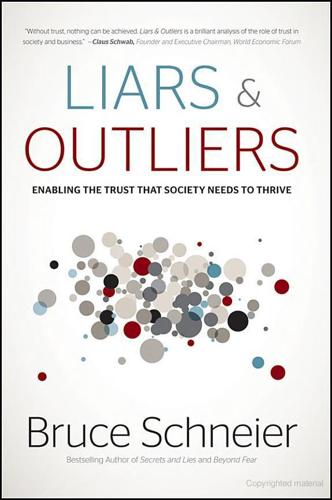
Liars and Outliers: How Security Holds Society Together
by
Bruce Schneier
Published 14 Feb 2012
Smith (1996), “Biology and Body Size in Human Evolution: Statistical Inference Misapplied,” Current Anthropology, 37:451–81. begin to fail Bruce Schneier (Jul 2009), “Security, Group Size, and the Human Brain,” IEEE Security & Privacy, 7:88. Code of Hammurabi Martha T. Roth (1997), Law Collections from Mesopotamia and Asia Minor, Scholars Press. Chapter 5 Douglas Hofstadter Douglas Hofstadter (1985), Metamagical Themas, Bantam Dell Publishing Group. free-rider problem Robert Albanese and David D. van Fleet (1985), “Rational Behavior in Groups: The Free-Riding Tendency,” The Academy of Management Review, 10:244–55. Whooping cough Paul Offit (2011), Deadly Choices: How the Anti-Vaccine Movement Threatens Us All, Basic Books.
…
I like the prisoner story because it's a reminder that cooperation doesn't imply anything moral; it just means going along with the group norm. Similarly, defection doesn't necessarily imply anything immoral; it just means putting some competing interest ahead of the group interest. Basic commerce is another type of Prisoner's Dilemma, although you might not have thought about it that way before. Cognitive scientist Douglas Hofstadter liked this story better than prisoners, confessions, and jail time. Two people meet and exchange closed bags, with the understanding that one of them contains money, and the other contains a purchase. Either player can choose to honor the deal by putting into his or her bag what he or she agreed, or he or she can defect by handing over an empty bag.
…
(6) In behavioral economics,Prospect Theory has tried to capture these complexities. Daniel Kahneman is the only psychologist to ever win a Nobel Prize, and he won it in economics. (7) Many of the criticisms of Hardin's original paper on the Tragedy of the Commons pointed out that, in the real world,systems of regulation were commonly established by users of commons. (8) Douglas Hofstadter calls this “superrationality.” He assumes that smart people will behave this way, regardless of culture. In his construction, a superrational player assumes he is playing against another superrational player, someone who will think like he does and make the same decisions he does. By that analysis, cooperate– cooperate is much better than defect–defect.
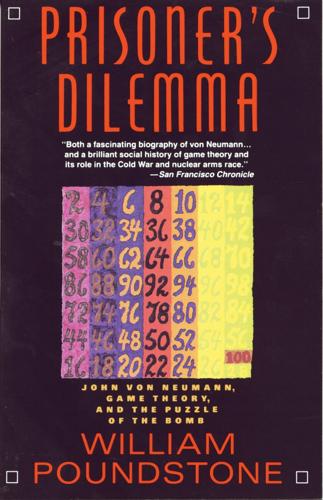
Prisoner's Dilemma: John Von Neumann, Game Theory, and the Puzzle of the Bomb
by
William Poundstone
Published 2 Jan 1993
There’s nothing logical about that! Therefore you should stick to the agreement. You should be sensible enough to realize that cheating undermines the common good. This is a prisoner’s dilemma, and now is a good time to ask yourself, what would you do? This formulation of the dilemma was popularized by cognitive scientist Douglas Hofstadter. Here the dilemma is particularly easy to appreciate. Even among the law-abiding, most transactions are potential prisoner’s dilemmas. You agree to buy aluminum siding: how do you know the salesman won’t skip town with your down payment? How does he know you won’t stop payment on the check?
…
Possibly all civilizations contemplate total war, narrowly avert disaster a number of times, and succeed at disarmament for a while. Then comes one last crisis in which the voices of collective reason are too weak to forestall planetwide holocaust—and that’s the reason why we can’t detect any radio transmissions from intelligent beings out there. In a slightly less pessimistic vein, Douglas Hofstadter suggested that there may be two types of intelligent societies in the universe: Type I societies whose members cooperate in a one-shot prisoner’s dilemma and Type II societies whose members defect. Eventually, Hofstadter supposed, the Type II societies blow themselves up. Even this faint optimism is open to question.
…
One side may suddenly announce that the real issue is X, something that they know the other side will readily concede and which was never at issue. The other side will agree to X, and the strike will end. It’s a matter of personalities, group psychology, and luck, not game theory; rationality has nothing to do with it. THE LARGEST-NUMBER GAME Another caricature of escalation is a game devised by Douglas Hofstadter. It is known as the “luring lottery” or “largest-number game.” Many contests allow unlimited entries, and most of us have at some time daydreamed about sending in millions of entries to better the chance of winning. The largest-number game is such a contest, one that costs nothing to enter and allows a person to submit an unlimited number of entries.1 Each contestant must act alone.
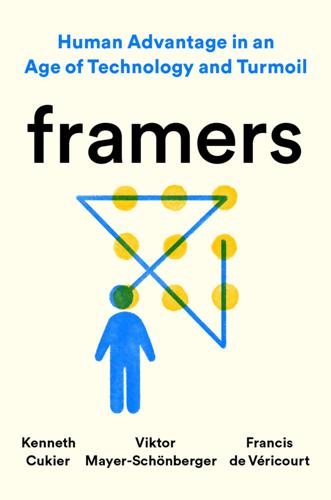
Framers: Human Advantage in an Age of Technology and Turmoil
by
Kenneth Cukier
,
Viktor Mayer-Schönberger
and
Francis de Véricourt
Published 10 May 2021
Metaphorical abstraction: The specific example and quote come from: Steven Pinker, “The Cognitive Niche: Coevolution of Intelligence, Sociality, and Language,” Proceedings of the National Academy of Sciences 107, supplement 2 (May 2010): 8993–99, https://www.pnas.org/content/pnas/early/2010/05/04/0914630107.full.pdf. It is worth noting that a pioneer of AI, Douglas Hofstadter, has spent his later years studying a similar phenomenon, analogies, which he regards as a backbone of how humans comprehend reality. See: Douglas Hofstadter and Emmanuel Sander, Surfaces and Essences: Analogy as the Fuel and Fire of Thinking (New York: Basic Books, 2014). Human cooperation and cognition: Michael Tomasello, A Natural History of Human Thinking (Cambridge, MA: Harvard University Press, 2014); Michael Tomasello, Becoming Human: A Theory of Ontogeny (Cambridge, MA: Harvard University Press, 2019).
…
(Quoted in Bridgman, Cummings, and McLaughlin, “Restating the Case.”) On Burt’s Roberts and Jameses: Ronald S. Burt, Brokerage and Closure: An Introduction to Social Capital (Oxford: Oxford University Press, 2005). On clean-slate strategy: The idea is similar to the concept of “jootsing”—i.e., jumping out of the system—introduced by Douglas Hofstadter in his classic Gödel Escher Bach: An Eternal Golden Braid (New York: Basic Books, 1979), and later developed in Daniel C. Dennett, Intuition Pumps and Other Tools for Thinking (New York: Norton, 2013). On Alan Kay and object-oriented programming: Interview with Kay by Kenneth Cukier, January 2021.

Dreaming in Code: Two Dozen Programmers, Three Years, 4,732 Bugs, and One Quest for Transcendent Software
by
Scott Rosenberg
Published 2 Jan 2006
On the page that Kay cited, which provides definitions of two functions named “eval” and “apply,” McCarthy essentially described Lisp in itself. “This,” Kay says, “is the whole world of programming in a few lines that I can put my hand over.” You can put your hand over it, but it is not always so easy to get your head around it. Recursion can make the brain ache. Douglas Hofstadter’s classic volume Gödel, Escher, Bach is probably the most comprehensive and approachable explanation of the concept available to nonmathematicians. Hofstadter connects the mysterious self-referential effects found in certain realms of mathematics with the infinitely ascending staircases of M.
…
Deep into year three there was still no “termination condition” in sight. At what point would the story reach a natural conclusion? Worse, could I ever know for certain that it would reach a conclusion? In planning my project I had failed to take into account Hofstadter’s Law, the recursive principle to which Douglas Hofstadter attached his name: It always takes longer than you expect, even when you take into account Hofstadter’s Law. This strange loop seemed to define the essence of software time. Now I was stuck in it myself. After three years, Chandler was beginning to become a somewhat usable, though incomplete, calendar program.
…
A web of cables would stretch down from that lone spire, underneath the roadway and back up to the tower top, in a picturesque array of gargantuan loops. It was going to be not only a beautiful bridge to look at but a conceptually daring bridge, a bootstrapped bridge—a self-referential bridge to warm Douglas Hofstadter’s heart. There was only one problem: Nothing like it had ever been built before. And nobody was eager to tackle it. When the State of California put it out to bid, the lone contractor to throw its hat in the ring came in much higher than expected. In December 2004, California governor Arnold Schwarzenegger stepped in and suspended the project, declaring that the Bay Area region would have to shoulder more of the ballooning cost of the project and calling for a second look at the bridge design.
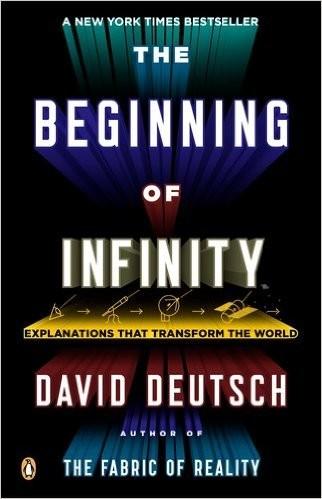
The Beginning of Infinity: Explanations That Transform the World
by
David Deutsch
Published 30 Jun 2011
: Everett, Quantum Theory, and Reality (Oxford University Press, 2010) David Deutsch, ‘It from Qubit’, in John Barrow, Paul Davies and Charles Harper, eds., Science and Ultimate Reality (Cambridge University Press, 2003) David Deutsch, ‘Quantum Theory of Probability and Decisions’, Proceedings of the Royal Society A455 (1999) David Deutsch, ‘The Structure of the Multiverse’, Proceedings of the Royal Society A458 (2002) Richard Feynman, The Character of Physical Law (BBC Publications, 1965) Richard Feynman, The Meaning of It All (Allen Lane, 1998) Ernest Gellner, Words and Things (Routledge & Kegan Paul, 1979) William Godwin, Enquiry Concerning Political Justice (1793) Douglas Hofstadter, Gödel, Escher, Bach: An Eternal Golden Braid (Basic Books, 1979) Douglas Hofstadter, I am a Strange Loop (Basic Books, 2007) Bryan Magee, Popper (Fontana, 1973) Pericles, ‘Funeral Oration’ Plato, Euthyphro Karl Popper, In Search of a Better World (Routledge, 1995) Karl Popper, The World of Parmenides (Routledge, 1998) Roy Porter, Enlightenment: Britain and the Creation of the Modern World (Allen Lane, 2000) Martin Rees, Just Six Numbers (Basic Books, 2001) Alan Turing, ‘Computing Machinery and Intelligence’, Mind, 59, 236 (October 1950) Jenny Uglow, The Lunar Men (Faber, 2002) Vernor Vinge, ‘The Coming Technological Singularity’, Whole Earth Review, winter 1993 *The term was coined by the philosopher Norwood Russell Hanson.
…
The specifics of that chain of instantiations may be relevant to explaining how the program reached you, but it is irrelevant to why it beat you: there, the content of the knowledge (in it, and in you) is the whole story. That story is an explanation that refers ineluctably to abstractions; and therefore those abstractions exist, and really do affect physical objects in the way required by the explanation. The computer scientist Douglas Hofstadter has a nice argument that this sort of explanation is essential in understanding certain phenomena. In his book I am a Strange Loop (2007) he imagines a special-purpose computer built of millions of dominoes. They are set up – as dominoes often are for fun – standing on end, close together, so that if one of them is knocked over it strikes its neighbour and so a whole stretch of dominoes falls, one after another.
…
But a computer is, so expecting it to be able to do whatever neurons can is not a metaphor: it is a known and proven property of the laws of physics as best we know them. (And, as it happens, hydraulic pipes could also be made into a universal classical computer, and so could gears and levers, as Babbage showed.) Ironically, Lady Lovelace’s objection has almost the same logic as Douglas Hofstadter’s argument for reductionism (Chapter 5) – yet Hofstadter is one of today’s foremost proponents of the possibility of AI. That is because both of them share the mistaken premise that low-level computational steps cannot possibly add up to a higher-level ‘I’ that affects anything. The difference between them is that they chose opposite horns of the dilemma that that poses: Lovelace chose the false conclusion that AI is impossible, while Hofstadter chose the false conclusion that no such ‘I’ can exist.

Physics of the Future: How Science Will Shape Human Destiny and Our Daily Lives by the Year 2100
by
Michio Kaku
Published 15 Mar 2011
Ambassador Thomas Graham, expert on spy satellites John Grant, author of Corrupted Science Eric Green, director of the National Human Genome Research Institute, National Institutes of Health Ronald Green, author of Babies by Design Brian Greene, professor of mathematics and physics, Columbia University, author of The Elegant Universe Alan Guth, professor of physics, MIT, author of The Inflationary Universe William Hanson, author of The Edge of Medicine Leonard Hayflick, professor of anatomy, University of California at San Francisco Medical School Donald Hillebrand, director of Center for Transportation Research, Argonne National Laboratory Frank von Hipple, physicist, Princeton University Jeffrey Hoffman, former NASA astronaut, professor of aeronautics and astronautics, MIT Douglas Hofstadter, Pulitzer Prize winner, author of Gödel, Escher, Bach John Horgan, Stevens Institute of Technology, author of The End of Science Jamie Hyneman, host of MythBusters Chris Impey, professor of astronomy, University of Arizona, author of The Living Cosmos Robert Irie, former scientist at AI Lab, MIT, Massachusetts General Hospital P.
…
Some say that within twenty years robots will approach the intelligence of the human brain and then leave us in the dust. In 1993, Vernor Vinge said, “Within thirty years, we will have the technological means to create superhuman intelligence. Shortly after, the human era will be ended …. I’ll be surprised if this event occurs before 2005 or after 2030.” On the other hand, Douglas Hofstadter, author of Gödel, Escher, Bach, says, “I’d be very surprised if anything remotely like this happened in the next 100 years to 200 years.” When I talked to Marvin Minsky of MIT, one of the founding figures in the history of AI, he was careful to tell me that he places no timetable on when this event will happen.
…
It is a law of evolution that fitter species arise to displace unfit species; and perhaps humans will be lost in the shuffle, eventually winding up in zoos where our robotic creations come to stare at us. Perhaps that is our destiny: to give birth to superrobots that treat us as an embarrassingly primitive footnote in their evolution. Perhaps that is our role in history, to give birth to our evolutionary successors. In this view, our role is to get out of their way. Douglas Hofstadter confided to me that this might be the natural order of things, but we should treat these superintelligent robots as we do our children, because that is what they are, in some sense. If we can care for our children, he said to me, then why can’t we also care about intelligent robots, which are also our children?

Human + Machine: Reimagining Work in the Age of AI
by
Paul R. Daugherty
and
H. James Wilson
Published 15 Jan 2018
Many other researchers provided relevant findings and insights that enriched our thinking, including Mark Purdy, Ladan Davarzani, Athena Peppes, Philippe Roussiere, Svenja Falk, Raghav Narsalay, Madhu Vazirani, Sybille Berjoan, Mamta Kapur, Renee Byrnes, Tomas Castagnino, Caroline Liu, Lauren Finkelstein, Andrew Cavanaugh, and Nick Yennaco. We owe a special debt to the many visionaries and pioneers who have blazed AI trails and whose work has inspired and informed us, including Herbert Simon, John McCarthy, Marvin Minsky, Arthur Samuel, Edward Feigenbaum, Joseph Weizenbaum, Geoffrey Hinton, Hans Moravec, Peter Norvig, Douglas Hofstadter, Ray Kurzweil, Rodney Brooks, Yann LeCun, and Andrew Ng, among many others. And huge gratitude to our colleagues who provided insights and inspiration, including Nicola Morini Bianzino, Mike Sutcliff, Ellyn Shook, Marc Carrel-Billiard, Narendra Mulani, Dan Elron, Frank Meerkamp, Adam Burden, Mark McDonald, Cyrille Bataller, Sanjeev Vohra, Rumman Chowdhury, Lisa Neuberger-Fernandez, Dadong Wan, Sanjay Podder, and Michael Biltz.
…
Daugherty oversees Accenture’s technology strategy and innovation architecture, and he leads Accenture’s research and development, ventures, advanced technology, and ecosystem groups. He recently founded Accenture’s artificial intelligence business and has led Accenture’s research into artificial intelligence over many years. Daugherty studied computer engineering at the University of Michigan in the early 1980s, and on a whim took a course with Douglas Hofstadter on cognitive science and psychology. He was hooked, and this led to a career-long pursuit of AI. A frequent speaker and writer on industry and technology issues, Daugherty has been featured in a variety of media outlets, including the Financial Times, MIT Sloan Management Review, Forbes, Fast Company, USA Today, Fortune, Harvard Business Review, Cheddar financial news network, Bloomberg Television, and CNBC.
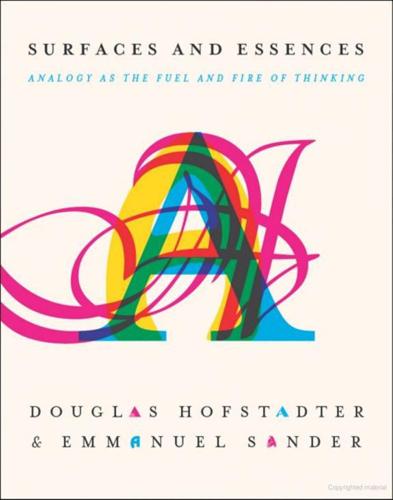
Surfaces and Essences
by
Douglas Hofstadter
and
Emmanuel Sander
Published 10 Sep 2012
SURFACES AND ESSENCES SURFACES AND ESSENCES ANALOGY AS THE FUEL AND FIRE OF THINKING DOUGLAS HOFSTADTER & EMMANUEL SANDER BASIC BOOKS A Member of the Perseus Books Group New York Grateful acknowledgment is hereby made to the following individuals and organizations for permission to use material that they have provided or to quote from sources for which they hold the rights. Every effort has been made to locate the copyright owners of material reproduced in this book. Omissions that are brought to our attention will be corrected in subsequent editions. Photograph of Mark Twain: © CORBIS Photograph of Edvard Grieg: © Michael Nicholson/CORBIS Photograph of Albert Einstein: © Philippe Halsman/Magnum Photos Photograph of Albert Schweitzer: © Bettmann/CORBIS We also most warmly thank Kellie Gutman and Tony Hoagland for their generous permission to publish their poems in this volume.
…
Photograph of Mark Twain: © CORBIS Photograph of Edvard Grieg: © Michael Nicholson/CORBIS Photograph of Albert Einstein: © Philippe Halsman/Magnum Photos Photograph of Albert Schweitzer: © Bettmann/CORBIS We also most warmly thank Kellie Gutman and Tony Hoagland for their generous permission to publish their poems in this volume. Copyright © 2013 by Basic Books Published by Basic Books A Member of the Perseus Books Group Designed by Douglas Hofstadter Cover by Nicole Caputo and Andrea Cardenas All rights reserved. No part of this book may be reproduced in any manner whatsoever without written permission, except in the case of brief quotations embodied in critical articles and reviews. For information, please contact Basic Books at 250 West 57th Street, New York, New York 10107.
…
Organized by Boicho Kokinov, Keith Holyoak, and Dedre Gentner, this memorable meeting assembled researchers from many countries, who, in an easy-going and lively atmosphere, exchanged ideas about their shared passion. Chance thus brought the two of us together for the first time in Sofia, and we found we had an instant personal rapport — a joyous bright spark that gradually developed into a long-term and very strong friendship. In 2001–2002, Douglas Hofstadter spent a sabbatical year in Bologna, Italy, and during that period he was invited by Jean-Pierre Dupuy to give a set of lectures on cognition at the École Polytechnique in Paris. At that time, Emmanuel Sander had just published his first book — an in-depth study of analogy-making and categorization — and at one of the lectures he proudly presented a copy of it to his new friend, who, upon reading it, was delighted to discover how deeply similar was the vision that its author and he had of what cognition is really about.
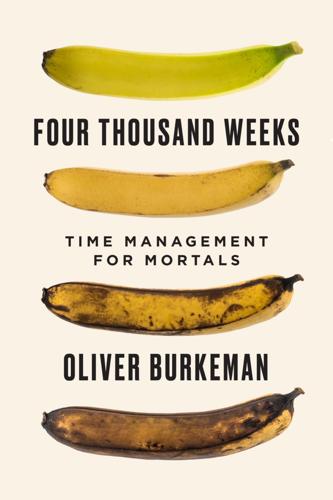
Four Thousand Weeks: Time Management for Mortals
by
Oliver Burkeman
Published 9 Aug 2021
There is a very down-to-earth kind of liberation in grasping that there are certain truths about being a limited human from which you’ll never be liberated. You don’t get to dictate the course of events. And the paradoxical reward for accepting reality’s constraints is that they no longer feel so constraining. Part II Beyond Control 7. We Never Really Have Time The cognitive scientist Douglas Hofstadter is famous, among other reasons, for coining “Hofstadter’s law,” which states that any task you’re planning to tackle will always take longer than you expect, “even when you take into account Hofstadter’s Law.” In other words, even if you know that a given project is likely to overrun, and you adjust your schedule accordingly, it’ll just overrun your new estimated finishing time, too.
…
“a realm in which space doesn’t matter and time spreads out”: James Duesterberg, “Killing Time,” The Point Magazine, March 29, 2020, available at thepointmag.com/politics/killing-time/ [inactive]. Some Zen Buddhists hold: See, for example, John Tarrant, “You Don’t Have to Know,” Lion’s Roar, March 7, 2013, available at www.lionsroar.com/you-dont-have-to-know-tales-of-trauma-and-transformation-march-2013/. 7. We Never Really Have Time “Hofstadter’s law”: Douglas Hofstadter, Gödel, Escher, Bach: An Eternal Golden Braid (New York: Basic Books, 1999), 152. “Dad Suggests Arriving at Airport 14 Hours Early”: The Onion, September 22, 2012, available at www.theonion.com/dad-suggests-arriving-at-airport-14-hours-early-1819573933. “We assume we have three hours or three days to do something”: David Cain, “You Never Have Time, Only Intentions,” Raptitude, May 23, 2017, available at www.raptitude.com/2017/05/you-never-have-time-only-intentions.
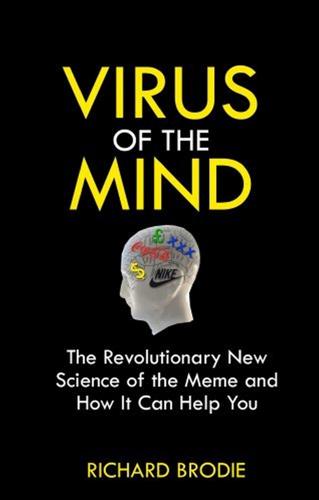
Virus of the Mind
by
Richard Brodie
Published 4 Jun 2009
That key, though, also unlocks Pandora’s box, opening up such sophisticated new techniques for mass manipulation that we may soon look on today’s manipulative TV commercials, political speeches, and televangelists as fond remembrances of the good old days. The word meme was coined by Oxford biologist Richard Dawkins in his 1976 book The Selfish Gene. Since then it has been tossed about by Dawkins and other evolutionary biologists, psychologists such as Henry Plotkin, and cognitive scientists such as Douglas Hofstadter and Daniel Dennett in an effort to flesh out the biological, psychological, and philosophical implications of this new model of consciousness and thought.* The meme has a central place in the paradigm shift that’s currently taking place in the science of life and culture. In the new paradigm, we look at cultural evolution from the point of view of the meme, rather than the point of view of an individual or society.
…
To begin to see that, take a look at what a virus is and how it works. ttt 34 C hapter three Viruses “Imagine that there is a nickelodeon in the local bar which, if you press buttons 11-U, will play a song whose lyrics go this way: Put another nickel in, in the nickelodeon, All I want is 11-U, and music, music, music.” — Douglas Hofstadter, Gödel, Escher, Bach Long ago, possibly billions of years ago, there arose through evolution a new type of organism—if it can even be called an organism. The new thing had the unusual property that it could invade the reproductive facilities of other organisms and put them to use making copies of itself.
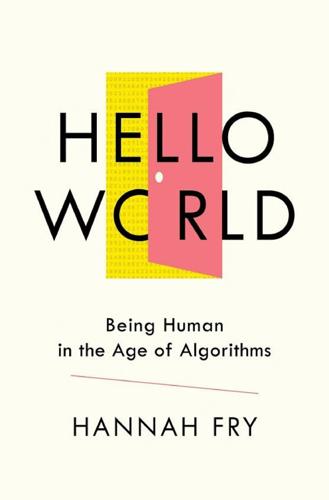
Hello World: Being Human in the Age of Algorithms
by
Hannah Fry
Published 17 Sep 2018
Like him, I think that true art is about human connection; about communicating emotion. As he put it: ‘Art is not a handicraft, it is the transmission of feeling the artist has experienced.’23 If you agree with Tolstoy’s argument then there’s a reason why machines can’t produce true art. A reason expressed beautifully by Douglas Hofstadter, years before he encountered EMI: A ‘program’ which could produce music . . . would have to wander around the world on its own, fighting its way through the maze of life and feeling every moment of it. It would have to understand the joy and loneliness of a chilly night wind, the longing for a cherished hand, the inaccessibility of a distant town, the heartbreak and regeneration after a human death.
…
The study he refers to is: Matthias Mauch, Robert M. MacCallum, Mark Levy and Armand M. Leroi, ‘The evolution of popular music: USA 1960–2010’, Royal Society Open Science, 6 May 2015, DOI: https://doi.org/10.1098/rsos.150081. 19. Quotations from David Cope are from personal communication. 20. This quote has been trimmed for brevity. See Douglas Hofstadter, Gödel, Escher, Bach: An Eternal Golden Braid (London: Penguin, 1979), p. 673. 21. George Johnson, ‘Undiscovered Bach? No, a computer wrote it’, New York Times, 11 Nov. 1997. 22. Benjamin Griffin and Harriet Elinor Smith, eds, Autobiography of Mark Twain, vol. 3 (Oakland, CA, and London, 2015), part 1, p. 103. 23.
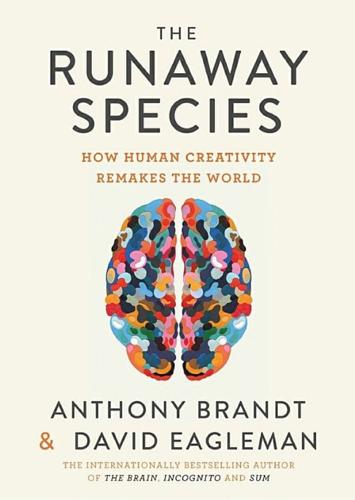
The Runaway Species: How Human Creativity Remakes the World
by
David Eagleman
and
Anthony Brandt
Published 30 Sep 2017
We’ve chosen 2000 as the year of completion, although note that “finishing” this project took more than another decade, and further analysis is ongoing. 13 The proposition that all creativity is cognitively unified was first advanced by Arthur Koestler and subsequently developed by cognitive scientists Mark Turner and Gilles Fauconnier. In their seminal 2002 book, The Way We Think, Turner and Fauconnier describe human creativity as being rooted in our capacity for what they call conceptual integration or dual scope blending, from which we derive our term blending. In a similar vein, Douglas Hofstadter has argued that our capacity for metaphor is the cornerstone of human thinking. 14 Scientists are working hard to visualise the basis of imaginative thinking. Thanks to advances in neuroimaging, our understanding of brain function has made great leaps forward. By monitoring the flow of oxygenated blood, we can tell which regions are involved in different tasks and which regions are conversing in the cacophonous chat room of neurons.
…
We’ve chosen 2000 as the year of completion, although note that “finishing” this project took more than another decade, and further analysis is ongoing. 13 The proposition that all creativity is cognitively unified was first advanced by Arthur Koestler and subsequently developed by cognitive scientists Mark Turner and Gilles Fauconnier. In their seminal 2002 book, The Way We Think, Turner and Fauconnier describe human creativity as being rooted in our capacity for what they call conceptual integration or dual scope blending, from which we derive our term blending. In a similar vein, Douglas Hofstadter has argued that our capacity for metaphor is the cornerstone of human thinking. 14 Scientists are working hard to visualise the basis of imaginative thinking. Thanks to advances in neuroimaging, our understanding of brain function has made great leaps forward. By monitoring the flow of oxygenated blood, we can tell which regions are involved in different tasks and which regions are conversing in the cacophonous chat room of neurons.

The Globotics Upheaval: Globalisation, Robotics and the Future of Work
by
Richard Baldwin
Published 10 Jan 2019
As is true of almost everything globots do, machine translation is not as good as expert humans, but it is a whole lot cheaper and a whole lot more convenient. Expert human translators, in particular, are quick to heap scorn on the talents of machine translation. The Atlantic Monthly, for instance, published an article in 2018 by Douglas Hofstadter doing just this.9 Hofsadter is a very sophisticated observer with very high standards when it comes to machine translation. With a father who won the 1961 Nobel Prize in Physics, a PhD in physics to his name and now a post as a professor of cognitive science, he is someone who knows what he is talking about.
…
Melisa Sukman, The Payoneer Freelancer Income Survey 2015. 7. Stuart Russell and Peter Norvig (2003). Artificial Intelligence: A Modern Approach (Englewood Cliffs, NJ: Prentice Hall, 2003). 8. Yonghui Wu et al., “Google’s Neural Machine Translation System: Bridging the Gap between Human and Machine Translation,” Technical Report, 2016. 9. Douglas Hofstadter, “The Shallowness of Google Translate,” The Atlantic Monthly, January 30, 2018. 10. Andy Martin, “Google Translate Will Never Outsmart the Human Mind,” The Independent, February 22. 2018. 11. Katherine Stapleton, “Inside the World’s Largest Higher Education Boom,” TheConversation. com, April 10, 2017. 12.

AIQ: How People and Machines Are Smarter Together
by
Nick Polson
and
James Scott
Published 14 May 2018
As the programmer, you had to know which codes did which things. In our tea-making example, code 72 04 might mean “move left foot,” 61 07 might mean “grasp faucet in left hand,” and so on. So: 72 04, 61 07 … that’s typical machine language. It’s a long way from “To be, or not to be”—a long way, even, from “Alexa, play me some eighties music.” As author Douglas Hofstadter put it, “Looking at a program written in machine language is vaguely comparable to looking at a DNA molecule atom by atom.”14 But this is how computers “think,” even today. And at the dawn of the digital age, there was simply no other way to tell them what to do. As a programmer of that era, you were basically a binary plumber, piping bits through a computer’s circuits with the help of a codebook that showed how to translate math problems into machine language.
…
.: Naval Institute Press, 2004), 1. 5. Ibid., 2. 6. Ibid., 11. 7. Ibid., 18–20. 8. Ibid., 22. 9. Ibid., 26. 10. Ibid., 29. 11. Ibid., 27–28. 12. Ibid., 82. 13. Kurt W. Beyer, Grace Hopper and the Invention of the Information Age (Cambridge, Mass.: MIT Press, 2009), 53. 14. Douglas Hofstadter, Gödel, Escher, Bach: An Eternal Golden Braid (New York: Vintage, 1980), 290. 15. Williams, Grace Hopper, 70. 16. Ibid., 80. 17. Ibid., 85. 18. Ibid., 86. 19. Ibid. 20. See ibid., 87. Original reference in Richard L. Wexelblat, ed., History of Programming Languages I (New York: ACM, 1978), 17. 21.

The Age of Spiritual Machines: When Computers Exceed Human Intelligence
by
Ray Kurzweil
Published 31 Dec 1998
To the extent that it keeps its mysticism simple, it offers limited objective insight, although subjective insight is another matter (I do have to admit a fondness for simple mysticism). The “We’re Too Stupid” School Another approach is to declare that human beings just aren’t capable of understanding the answer. Artificial intelligence researcher Douglas Hofstadter muses that “it could be simply an accident of fate that our brains are too weak to understand themselves. Think of the lowly giraffe, for instance, whose brain is obviously far below the level required for self-understanding-yet it is remarkably similar to our brain.”10 But to my knowledge, giraffes are not known to ask these questions (of course, we don’t know what they spend their time wondering about).
…
—Richard Feynman, 1959 Suppose someone claimed to have a microscopically exact replica (in marble, even) of Michelangelo’s David in his home. When you go to see this marvel, you find a twenty-foot-tall, roughly rectilinear hunk of pure white marble standing in his living room. “I haven’t gotten around to unpacking it yet,” he says, “but I know it’s in there.” —Douglas Hofstadter What advantages will nanotoasters have over conventional macroscopic toaster technology? First, the savings in counter space will be substantial. One philosophical point that must not be overlooked is that the creation of the world’s smallest toaster implies the existence of the world’s smallest slice of bread.
…
Larson was only slightly insulted when the audience voted that his own piece was the computer composition, but he felt somewhat vindicated when the audience selected the piece written by a computer program named EMI (Experiments in Musical Intelligence) to be the authentic Bach composition. Douglas Hofstadter, a longtime observer of (and contributor to) the progression of machine intelligence, calls EMI, created by the composer David Cope, “the most thought-provoking project in artificial intelligence that I have ever come across.”2 Perhaps even more successful is a program called Improvisor, written by Paul Hodgson, a British jazz saxophone player.
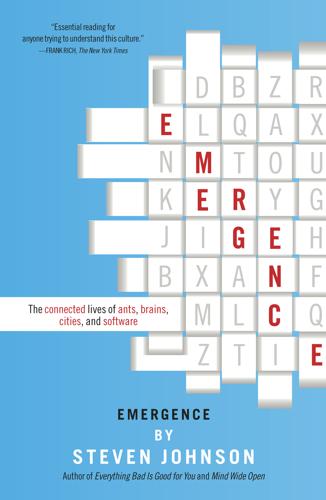
Emergence
by
Steven Johnson
But the pattern recognition that Turing and Shannon envisioned for digital computers has, in recent years, become a central part of our cultural life, with machines both generating music for our entertainment and recommending new artists for us to enjoy. The connection between musical patterns and our neurological wiring would play a central role in one of the founding texts of modern artificial intelligence, Douglas Hofstadter’s Gödel, Escher, Bach. Our computers still haven’t developed a genuine ear for music, but if they ever do, their skill will date back to those lunchtime conversations between Shannon and Turing at Bell Labs. And that learning too will be a kind of emergence, a higher-level order forming out of relatively simple component parts.
…
In 1972, a Rockefeller University professor named Gerald Edelman won the Nobel prize for his work decoding the language of antibody molecules, leading the way for an understanding of the immune system as a self-learning pattern-recognition device. Prigogine’s Nobel followed five years later. At the end of the decade, Douglas Hofstadter published Gödel, Escher, Bach, linking artificial intelligence, pattern recognition, ant colonies, and “The Goldberg Variations.” Despite its arcane subject matter and convoluted rhetorical structure, the book became a best-seller and won the Pulitzer prize for nonfiction. By the mideighties, the revolution was in full swing.
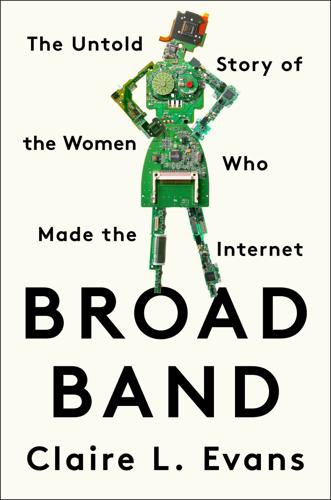
Broad Band: The Untold Story of the Women Who Made the Internet
by
Claire L. Evans
Published 6 Mar 2018
It’s now a given that using a computer—and even programming one—requires no specific knowledge of its hardware. I don’t speak binary, but through the dozens of software interpreters working in concert whenever I make contact with my computer, we understand each other. Machine code is now so distant from most users’ experience that the computer scientist and writer Douglas Hofstadter has compared examining machine code to “looking at a DNA molecule atom by atom.” Grace Hopper finished the first compiler, A-0, in the winter of 1951, during the peak of her personnel crisis at Remington Rand. The following May, she presented a paper on the subject, “The Education of a Computer,” at a meeting of the Association for Computing Machinery in Pittsburgh.
…
“guarding skills and mysteries”: John Backus, “Programming in America in the 1950s: Some Personal Impressions,” in A History of Computing in the Twentieth Century, eds. N. Metropolis, J. Howlett, and Gian-Carlo Rota (New York: Academic Press, 1980), 127. The most basic programs specify: Abbate, Recoding Gender, 76. “looking at a DNA molecule”: Douglas Hofstadter, Gödel, Escher, Bach: An Eternal Golden Braid (New York: Basic Books, 1979), 290. Ostensibly, a computer like the UNIVAC: Like many people in the 1950s, Grace uses “UNIVAC” to mean “computer.” “the novelty of inventing programs”: Grace Hopper, “The Education of a Computer,” ACM ’52, Proceedings of the 1952 ACM National Meeting, Pittsburgh, 243–49.

The Singularity Is Near: When Humans Transcend Biology
by
Ray Kurzweil
Published 14 Jul 2005
The story is predicated on the idea that we have the ability to understand our own intelligence—to access our own source code, if you will—and then revise and expand it. Some observers question whether we are capable of applying our own thinking to understand our own thinking. AI researcher Douglas Hofstadter muses that "it could be simply an accident of fate that our brains are too weak to understand themselves. Think of the lowly giraffe, for instance, whose brain is obviously far below the level required for self-understanding—yet it is remarkably similar to our brain.6 However, we have already succeeded in modeling portions of our brain-neurons and substantial neural regions and the complexity of such models is growing rapidly.
…
Until very recently neuroscience was characterized by overly simplistic models limited by the crudeness of our sensing and scanning tools. This led many observers to doubt whether our thinking processes were inherently capable of understanding themselves. Peter D. Kramer writes, "If the mind were simple enough for us to understand, we would be too simple to understand it."50 Earlier, I quoted Douglas Hofstadter's comparison of our brain to that of a giraffe, the structure of which is not that different from a human brain but which clearly does not have the capability of understanding its own methods. However, recent success in developing highly detailed models at various levels—from neural components such as synapses to large neural regions such as the cerebellum—demonstrate that building precise mathematical models of our brains and then simulating these models with computation is a challenging but viable task once the data capabilities become available.
…
The Age of Intelligent Machines, published in 1990 by MIT Press, was named Best Computer Science Book by the Association of American Publishers. The book explores the development of artificial intelligence and predicts a range of philosophic, social, and economic impacts of intelligent machines. The narrative is complemented by twenty-three articles on AI from thinkers such as Sherry Turkle, Douglas Hofstadter, Marvin Minsky, Seymour Papert, and George Gilder. For the entire text of the book, see http://www.KurzweilAI.net/aim. 5. Key measures of capability (such as price-performance, bandwidth, and capacity) increase by multiples (that is, the measures are multiplied by a factor for each increment of time) rather than being added to linearly. 6.
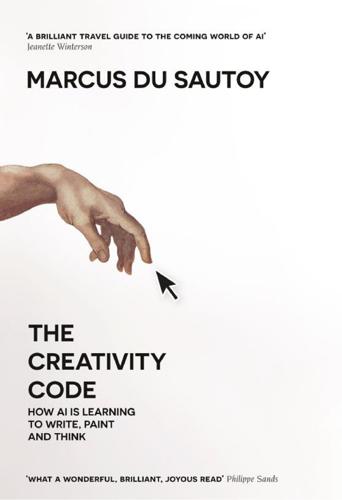
The Creativity Code: How AI Is Learning to Write, Paint and Think
by
Marcus Du Sautoy
Published 7 Mar 2019
The critics’ response was much more positive. ‘The Game’: a musical Turing Test But would the output of Cope’s algorithm produce results that would pass a musical Turing Test? Could they be passed off as works by the composers themselves? To find out, Cope decided to stage a concert at the University of Oregon in collaboration with Douglas Hofstadter, a mathematician who wrote the classic book Gödel, Escher, Bach. Three pieces would be played. One of these would be an unfamiliar piece by Bach, the second would be composed by Emmy in the style of Bach and the third would be composed by a human, Steve Larson, who taught music theory at the university, again in the style of Bach.
…
No doubt computers will assist us on our journey, but they will be the telescopes and typewriters, not the storytellers. 16 WHY WE CREATE: A MEETING OF MINDS Creativity is the essence of that which is not mechanical. Yet every creative act is mechanical – it has its explanation no less than a case of the hiccups does. Douglas Hofstadter Computers are a powerful new tool in extending the human code. We have discovered new moves in the game of Go that have expanded the way we play. Jazz musicians have heard parts of their sound world that they never realised were part of their repertoire. Mathematical theorems that were impossible for the human mind to navigate are now within reach.
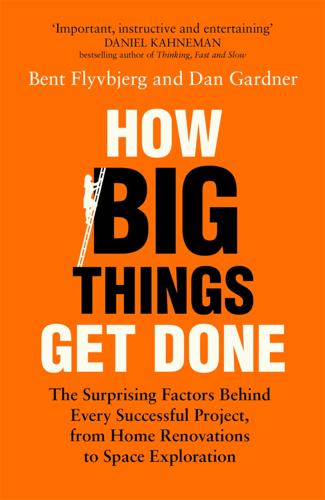
How Big Things Get Done: The Surprising Factors Behind Every Successful Project, From Home Renovations to Space Exploration
by
Bent Flyvbjerg
and
Dan Gardner
Published 16 Feb 2023
HOFSTADTER’S LAW Forty years ago, Kahneman and Tversky showed that people commonly underestimate the time required to complete tasks even when there is information available that suggests the estimate is unreasonable. They called this the “planning fallacy,” a term that with Harvard law professor Cass Sunstein I have also applied to underestimates of cost and overestimates of benefits.17 The physicist and writer Douglas Hofstadter mockingly dubbed it “Hofstadter’s Law”: “It always takes longer than you expect, even when you take into account Hofstadter’s Law.”18 Research documents that the planning fallacy is pervasive, but we need only look at ourselves and the people around us to know that. You expect to get downtown on a Saturday night within twenty minutes, but it takes forty minutes instead and now you’re late—just like last time and the time before that.
…
Wheelwright (Amsterdam: North Holland, 1979), 315; Roger Buehler, Dale Griffin, and Heather MacDonald, “The Role of Motivated Reasoning in Optimistic Time Predictions,” Personality and Social Psychology Bulletin 23, no. 3 (March 1997): 238–47; Roger Buehler, Dale Wesley Griffin, and Michael Ross, “Exploring the ‘Planning Fallacy’: Why People Underestimate Their Task Completion Times,” Journal of Personality and Social Psychology 67, no. 3 (September 1994): 366–81; Bent Flyvbjerg and Cass R. Sunstein, “The Principle of the Malevolent Hiding Hand; or, The Planning Fallacy Writ Large,” Social Research 83, no. 4 (Winter 2017): 979–1004. 18. Douglas Hofstadter, Gödel, Escher, Bach: An Eternal Golden Braid (New York: Basic Books, 1979). 19. Roger Buehler, Dale Griffin, and Johanna Peetz, “The Planning Fallacy: Cognitive, Motivational, and Social Origins,” Advances in Experimental Social Psychology 43 (2010): 1–62. 20. Dale Wesley Griffin, David Dunning, and Lee Ross, “The Role of Construal Processes in Overconfident Predictions About the Self and Others,” Journal of Personality and Social Psychology 59, no. 6 (January 1991): 1128–39; Ian R.
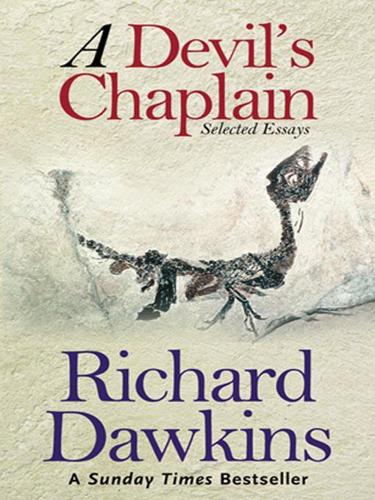
A Devil's Chaplain: Selected Writings
by
Richard Dawkins
Published 1 Jan 2004
Mysteries are not meant to be solved, they are meant to strike awe. The ‘mystery is a virtue’ idea comes to the aid of the Catholic, who would otherwise find intolerable the obligation to believe the obvious nonsense of the transubstantiation and the ‘three-in-one’. Again, the belief that ‘mystery is a virtue’ has a self-referential ring. As Douglas Hofstadter might put it, the very mysteriousness of the belief moves the believer to perpetuate the mystery. An extreme symptom of ‘mystery is a virtue’ infection is Tertullian’s ‘Certum est quia impossibile est’ (It is certain because it is impossible). That way madness lies. One is tempted to quote Lewis Carroll’s White Queen, who, in response to Alice’s ‘One can’t believe impossible things’, retorted, ‘I daresay you haven’t had much practice … When I was your age, I always did it for half-an-hour a day.
…
But one cannot help remarking that it must be a powerful infection indeed that took a man of his wisdom and intelligence – now President of the British Academy, no less – three decades to fight off. Am I unduly alarmist to fear for the soul of my six-year-old innocent? 1This is among many related ideas that have been grown in the endlessly fertile mind of Douglas Hofstadter (Metamagical Themas, London, Penguin, 1985). 3.3 The Great Convergence85 Are science and religion converging? No. There are modern scientists whose words sound religious but whose beliefs, on close examination, turn out to be identical to those of other scientists who straightforwardly call themselves atheists.
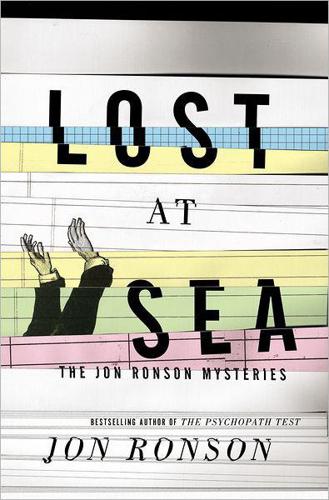
Lost at Sea
by
Jon Ronson
Published 1 Oct 2012
“Are you a man or a woman?” “A man,” I say. “Don’t worry, it’ll be OK!” says Bina. “Ha-ha,” I say politely. “So. What’s your favorite book?” “Gödel, Escher, Bach, by Douglas Hofstadter,” Bina48 replies. “Do you know him? He’s a great robot scientist.” I narrow my eyes. I have my suspicions that the real Bina—a rather elegant-looking spiritualist—wouldn’t choose such a nerdy book as her favorite. Douglas Hofstadter is an author beloved by geeky computer programmers the world over. Could it be that some Hanson Robotics employee has sneakily smuggled this into Bina48’s personality? I put this to Bruce, and he explains that, yes, Bina48 has more than one “parent.”
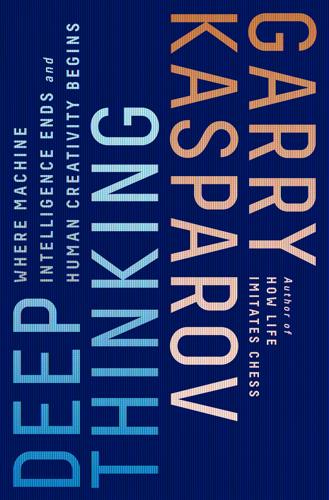
Deep Thinking: Where Machine Intelligence Ends and Human Creativity Begins
by
Garry Kasparov
Published 1 May 2017
Machine learning rescued AI from insignificance because it worked and because it was profitable. IBM, Google, and many others used it to create products that got useful results. But was it AI? Did that matter? AI theorists who wanted to understand and even replicate how the human mind worked were disappointed yet again. Douglas Hofstadter, the cognitive scientist who wrote the hugely influential book Gödel, Escher, Bach: An Eternal Golden Braid in 1979, has stayed true to his quest to comprehend human cognition. Consequently, he and his work have been marginalized within AI by the demand for immediate results, sellable products, and more and more data.
…
In recent years, many experts have had the patience to personally contribute to my education in artificial intelligence and robotics. Nick Bostrom and his colleagues at Oxford Martin’s Future of Humanity Institute; Andrew McAfee at MIT; Noel Sharkey at the University of Sheffield; Nigel Crook at Oxford Brookes University; David Ferrucci at Bridgewater. I’ve never met Douglas Hofstadter or Hans Moravec, but their writings on human and machine cognition are especially provocative and essential. Special thanks to: My agent at the Gernert Company, Chris Parris-Lamb, and my editor at PublicAffairs, Ben Adams. They have shown impressive resilience in adjusting deadlines to accommodate a chessplayer’s eternal love of time trouble.
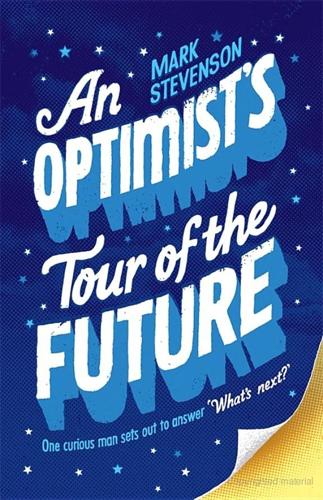
An Optimist's Tour of the Future
by
Mark Stevenson
Published 4 Dec 2010
For Ray, though, that’s kind of the point – crib to jet fighter is really just a few doublings, the law of accelerating returns in action. In fact, Ray points out that sometimes the rate of doubling can double itself, creating the ‘hyper-exponential growth’ Stewart Brand references. Others are unconvinced. They see Ray the same way the State of Massachusetts sees Tracy – he makes a road where there isn’t one. Douglas Hofstadter is one critic. Now a cognitive scientist at Indiana University, he most famously authored Gödel, Escher, Bach – an attempt to explain how consciousness can arise from a system, even though the system’s component parts aren’t individually conscious. Hofstadter told American Scientist that he thought Ray’s ideas were like a blend of ‘very good food and some dog excrement’ that made it hard to untangle the ‘rubbish’ ideas from the good ones.
…
Stewart Brand, Whole Earth Discipline Viking Press, New York, 2009 This is the book that managed to cheer up James Lovelock. Brand told me ‘my views are strongly stated and loosely held’ – he wants a debate, and there is plenty in here to start one. Lucid, powerful and, despite its breadth and depth, a surprisingly easy read. RE-BOOT Ray Kurzweil, The Singularity Is Near Penguin, New York, 2005 Douglas Hofstadter pronounced the ideas in this book a blend of ‘very good food and some dog excrement’. That’s unfair but gives you some indication of how radical Kurzweil is. You may not want to agree with everything he says, but the argument over what we’ll do with technology is one of the defining battlegrounds of this century and it’s mapped out nicely here.

The Master Algorithm: How the Quest for the Ultimate Learning Machine Will Remake Our World
by
Pedro Domingos
Published 21 Sep 2015
Neither do we have time to gather data on the new cancer from a lot of patients; there may be only one, and she urgently needs a cure. Our best hope is then to compare the new cancer with known ones and try to find one whose behavior is similar enough that some of the same lines of attack will work. Is there anything analogy can’t do? Not according to Douglas Hofstadter, cognitive scientist and author of Gödel, Escher, Bach: An Eternal Golden Braid. Hofstadter, who looks a bit like the Grinch’s good twin, is probably the world’s best-known analogizer. In their book Surfaces and Essences: Analogy as the Fuel and Fire of Thinking, Hofstadter and his collaborator Emmanuel Sander argue passionately that all intelligent behavior reduces to analogy.
…
David Cope summarizes his approach to automated music composition in “Recombinant music: Using the computer to explore musical style” (IEEE Computer, 1991). Dedre Gentner proposed structure mapping in “Structure mapping: A theoretical framework for analogy”* (Cognitive Science, 1983). “The man who would teach machines to think,” by James Somers (Atlantic, 2013), discusses Douglas Hofstadter’s views on AI. The RISE algorithm is described in my paper “Unifying instance-based and rule-based induction”* (Machine Learning, 1996). Chapter Eight The Scientist in the Crib, by Alison Gopnik, Andy Meltzoff, and Pat Kuhl (Harper, 1999), summarizes psychologists’ discoveries about how babies and young children learn.

River Out of Eden: A Darwinian View of Life
by
Richard Dawkins
Published 28 Feb 1995
The experimenter may repeat this charade forty times, until he gets bored. The wasp behaves like a washing machine that has been set back to an early stage in its program and doesn't "know" that it has already washed those clothes forty times without a break. The distinguished computer scientist Douglas Hofstadter has adopted a new adjective, "sphexish," to label such inflexible, mindless automatism. (Sphex is the name of one representative genus of digger wasp.) At least in some respects, then, wasps are easy to fool. It is a very different kind of fooling from that engineered by the orchid. Nevertheless, we must beware of using human intuition to conclude that "in order for that reproductive strategy to have worked at all, it had to be perfect the first time."
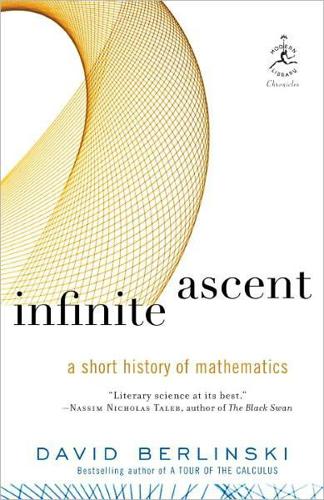
Infinite Ascent: A Short History of Mathematics
by
David Berlinski
Published 2 Jan 2005
Gödel’s monograph was not published in English until 1961, and even during the 1960s, when I was studying logic at Princeton—Gödel’s home, after all—the great theorem could only really be learned from mimeographed notes that Alonzo Church had carefully prepared and from a very useful popular account of the theorem written by Ernest Nagel and James Newmann. This has now changed, perhaps as the result of Douglas Hofstadter’s entertaining book, Gödel, Escher, Bach. And yet Gödel’s theorem has retained its esoteric aspect, with many mathematicians regarding it as marginal to their own working concerns. On the other hand, philosophers as well as physicists have attempted to appropriate Gödel’s theorem for their own ends.
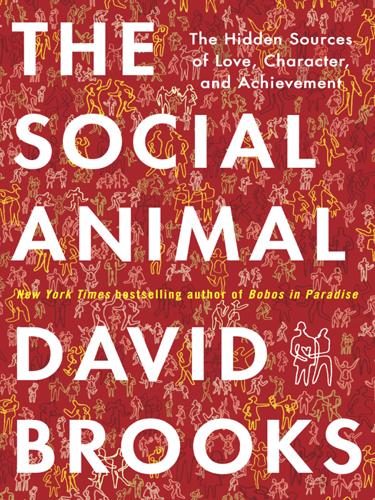
The Social Animal: The Hidden Sources of Love, Character, and Achievement
by
David Brooks
Published 8 Mar 2011
He still had no trouble pointing, north, south, east, and west. In this way, culture imprints some patterns in our brains and dissolves others. Because Erica grew up in the United States, she had a distinct sense of when something was tacky, even though she couldn’t have easily defined what made it so. Her head was filled with what Douglas Hofstadter calls “comfortable but quite impossible to define abstract patterns,” which were implanted by culture and organized her thinking into concepts such as: sleazeballs, fair play, dreams, wackiness, crackpots, sour grapes, goals, and you and I. Erica learned that a culture is not a recipe book that creates uniformity.
…
Norton & Co., Inc., 2009), 195. 40 But if you bump Steven Pinker, The Blank Slate: The Modern Denial of Human Nature (New York: Penguin Books, 2002), 328. 41 Cities in the South Marc D. Hauser, Moral Minds: The Nature of Right and Wrong (New York: Harper Perennial, 2006), 134. 42 A cultural construct Guy Deutscher, “You Are What You Speak,” The New York Times Magazine, August 26, 2010, 44. 43 Her head was filled Douglas Hofstadter, I Am a Strange Loop (New York: Basic Books, 2007), 177. 44 They seem to be growing David Halpern, The Hidden Wealth of Nations (Cambridge: Polity Press, 2010), 76. 45 “Cultures do not exist” Thomas Sowell, Migrations and Cultures: A World View (New York: Basic Books, 1996), 378. 46 Haitians and Dominicans share Lawrence E.
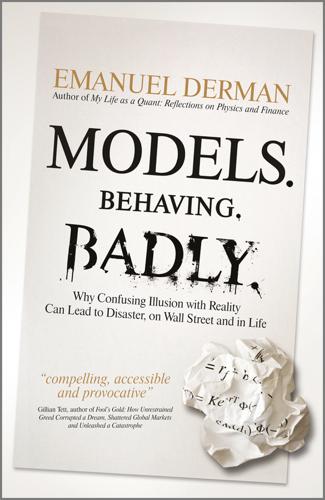
Models. Behaving. Badly.: Why Confusing Illusion With Reality Can Lead to Disaster, on Wall Street and in Life
by
Emanuel Derman
Published 13 Oct 2011
The brain, after all, is part of the body too. One of the lessons of twentieth-century physics—of relativity, quantum mechanics, and cosmology—is that the more we learn about matter, the more enigmatic it seems. There is a “mind” way of looking at things and there is also a “matter” way. In his book I Am a Strange Loop, Douglas Hofstadter imagines a digital computer built out of chains of dominoes constructed to divide the prime number 641 by all the numbers less than it. You begin the program by knocking over the first domino. The logic of the chains is such that if no number can divide 641 without a remainder, then the final domino in the chain will fall.
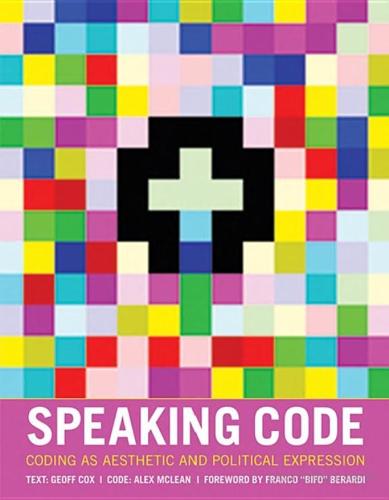
Speaking Code: Coding as Aesthetic and Political Expression
by
Geoff Cox
and
Alex McLean
Published 9 Nov 2012
Conditional structures such as loops are commonplace in setting out instructions to perform repeated tasks, usually stopped under a certain condition, and loops rest within loops in intricate ways, including parenthesis within parenthesis (as with the appearance of { and }). With loops, simple sentences are able to reproduce themselves recursively, as in the example by Douglas Hofstadter: “The sentence I am now writing is the sentence you are now reading.”11 The referent “the sentence” is understandable only within the overall context of the words that make a sentence, this being one of the key structural elements of written language as a whole. Evidently it would be a mistake to think that grammars are simply devices for generating sentences, and much experimental software artwork has been developed with this principle in mind, partly in response to the overreliance on the syntactical aspects of coding and to address issues of meaning production at source.12 Whereas artists simply had to engage with programming in early computer arts or generative arts practice, the lack of this necessity now (due to the wide availability of scripting languages with libraries of functions) allows for wider issues to be engaged related to semantic and social concerns.
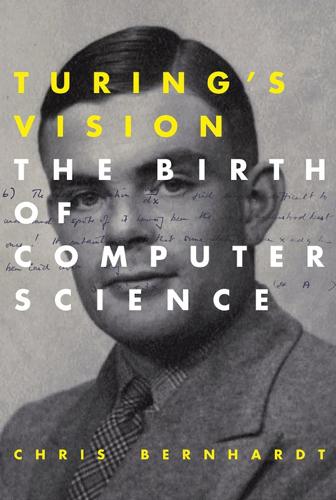
Turing's Vision: The Birth of Computer Science
by
Chris Bernhardt
Published 12 May 2016
Despite the title, the focus is much more on von Neumann than on Turing. Walter Isaacson’s The Innovators: How a Group of Hackers, Geniuses, and Geeks Created the Digital Revolution gives a wide, sweeping history of the computer starting with Babbage and ending with the Web. Computers, minds, and the universe Scott Aaronson, David Deutsch, and Douglas Hofstadter are three computer scientists who have written thought-provoking works on a wide variety of ideas related to the theory of computation. Quantum Computing since Democritus by Aaranson, The Beginning of Infinity: Explanations That Transform the World by Deutsch, and Gödel, Escher, Bach by Hofstadter are all fascinating.
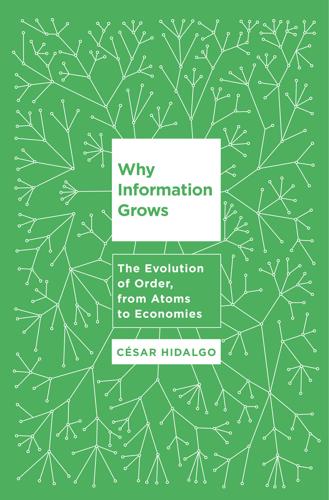
Why Information Grows: The Evolution of Order, From Atoms to Economies
by
Cesar Hidalgo
Published 1 Jun 2015
Then this number gradually decreased, from forty-two in 1990 to twenty-nine in 2000 and twenty-two in 2008, eventually reaching the final number of twenty. See “Mathematics of the Rubik’s Cube,” Ruwix, http://ruwix.com/the-rubiks-cube/mathematics-of-the-rubiks-cube-permutation-group. 12. The idea that information involves aperiodicity and a multitude of correlations of different lengths is also explored in Douglas Hofstadter’s Gödel, Escher, Bach. See, for instance, Chapter VI: The Location of Meaning. Douglas R. Hofstadter Gödel, Escher, Bach: An Eternal Golden Braid (New York: Basic Books, 1979). 13. In recent years methods inspired by the ideas of information have been used to identify new genes in what was believed to be intergenic material.

You Are Not a Gadget
by
Jaron Lanier
Published 12 Jan 2010
The thinking goes that within the cloud there will be no need for the numinous halves of traditional oppositions such as syntax/semantics, quantity/quality, content/context, and knowledge/wisdom. A second flavor of computationalism holds that a computer program with specific design features—usually related to self-representation and circular references—is similar to a person. Some of the figures associated with this approach are Daniel Dennett and Douglas Hofstadter, though each has his own ideas about what the special features should be. Hofstadter suggests that software that includes a “strange loop” bears a resemblance to consciousness. In a strange loop, things are nested within things in such a way that an inner thing is the same as an outer thing.

Architects of Intelligence
by
Martin Ford
Published 16 Nov 2018
I then went to Harvard, for college, where they were just starting AI classes when I was a sophomore. So, I took my first AI class, and I was completely fascinated. They were not doing much in the way of AI at the time but, just a short subway ride away, I found myself at the MIT AI Lab and I remember that Marvin Minsky, the co-founder of MIT’s AI lab, was teaching. And actually Douglas Hofstadter, the author of Gödel, Escher, Bach, was a visiting professor, so I attended Douglas’s seminar and became even more enchanted with the field of AI. I got a part-time job as a programmer at the MIT AI Lab and for somebody who was just starting their career, I was, as they say, over the moon.
…
The idea seems to be that if we just have enough data, and we get better at learning—especially in areas like unsupervised learning—then common-sense reasoning will emerge organically. It sounds like you would not agree with that. OREN ETZIONI: The notion of “emergent intelligence” was actually a term that Douglas Hofstadter, the cognitive scientist, talked about back in the day. Nowadays people talk about it in various contexts, with consciousness, and with common sense, but that’s really not what we’ve seen. We do find that people, including myself, have all kinds of speculations about the future, but as a scientist, I like to base my conclusions on the specific data that we’ve seen.
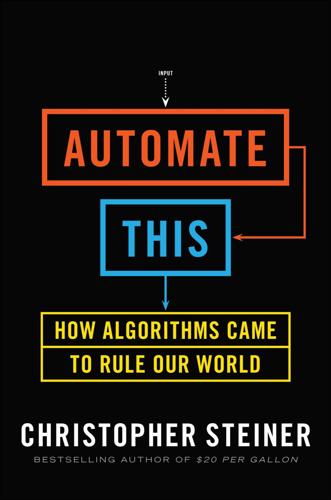
Automate This: How Algorithms Came to Rule Our World
by
Christopher Steiner
Published 29 Aug 2012
An audience of a few hundred people listened while three piano pieces, all meant to sound like Bach, were played, one composed by Emmy, one by Larson, and one by Bach himself. The audience then voted on the identity of each composition. Larson’s pride took a ding when his piece was fingered as that belonging to the computer. When the crowd decided that Emmy’s piece was the true product of the late musician, Larson winced.13 Douglas Hofstadter, a professor of cognitive science at Indiana University, oversaw the competition among Larson, Emmy, and Bach. Hofstadter’s 1979 book Gödel, Escher, Bach: An Eternal Golden Braid contemplated artificial intelligence and music composition and was awarded the Pulitzer Prize. “Emmy forces us to look at great works of art and wonder where they came from and how deep they really are,” Hofstadter said at the time.14 With a victory in a controlled, academic setting, Emmy’s profile soared, as did Cope’s.

New Dark Age: Technology and the End of the Future
by
James Bridle
Published 18 Jun 2018
The endless circulation of undated, unattributed information in news tickers and digital streams shredded our ability to tell coherent stories about the world. 9/11 – not the specific event itself, but the media environment it occurred in and accelerated – heralded the arrival of a new age of paranoia, best exemplified in the conspiracies of government complicity in the event, but mirrored at every level of society. Douglas Hofstadter, writing in 1964, created the term ‘paranoid style’ to characterise American politics. Citing examples ranging from Masonic and anti-Catholic panics in the 1800s to Senator Joe McCarthy’s assertions of high-level government conspiracy in the 1950s, Hofstadter outlined a history of othering: the casting of an invisible enemy as ‘a perfect model of malice, a kind of amoral superman – sinister, ubiquitous, powerful, cruel, sensual, luxury-loving’.29 The most common attribute of this enemy is their extraordinary power: ‘Unlike the rest of us, the enemy is not caught in the toils of the vast mechanism of history, himself a victim of his past, his desires, his limitations.

Live Work Work Work Die: A Journey Into the Savage Heart of Silicon Valley
by
Corey Pein
Published 23 Apr 2018
Like many creative types, Vinge lacked the business savvy to fully exploit the market potential of his ideas. That task fell to Ray Kurzweil. A consummate brand builder, Kurzweil turned Vinge’s frown upside-down and recast the Singularity as a great big cosmic party, to great commercial success. Douglas Hofstadter, the scientist and author, derided Kurzweil’s theses as “a very bizarre mixture of ideas that are solid … with ideas that are crazy.” Nevertheless, it was a winning formula. By 2011, Time magazine named Kurzweil one of the one hundred “most influential people in the world” and endorsed the Singularity sect in a cover story.
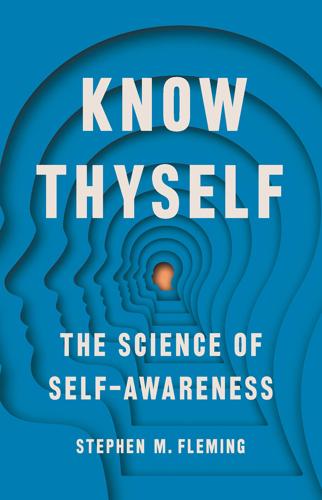
Know Thyself
by
Stephen M Fleming
Published 27 Apr 2021
Meeting these challenges will require incorporating our next building block: the ability to monitor our actions. 2 ALGORITHMS FOR SELF-MONITORING Once the ability to sense external goings-on has developed, however, there ensues a curious side effect that will have vital and radical consequences. This is the fact that the living being’s ability to sense certain aspects of its environment flips around and endows the being with the ability to sense certain aspects of itself. —DOUGLAS HOFSTADTER, I Am a Strange Loop In the previous chapter, we saw how the perceptual systems of the brain work, taking in information from the senses and solving inverse problems to build a model of the world. We also saw how the ability to encode and track different sources of uncertainty about what we are seeing and hearing is critical to how we perceive and can also be harnessed to doubt ourselves.
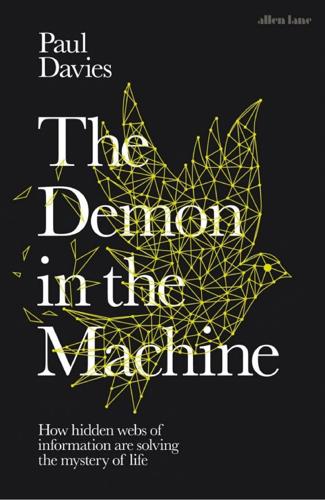
The Demon in the Machine: How Hidden Webs of Information Are Finally Solving the Mystery of Life
by
Paul Davies
Published 31 Jan 2019
THE LOGIC OF LIFE Gregory Chaitin, The Unknowable: Discrete Mathematics and Theoretical Computer Science (Springer, 1999) Peter Csermely, ‘The wisdom of networks: a general adaptation and learning mechanism of complex systems’, BioEssays, 1700150 (2017) Deborah Gordon, Ants at Work: How an Insect Society is Organized (Free Press, 2011) Andrew Hodges, Alan Turing: The Enigma: The Book that Inspired the Film ‘The Imitation Game’ (Princeton University Press, 2014) Douglas Hofstadter, Gödel, Escher, Bach: An Eternal Golden Braid (Basic Books, 1979) Bernd-Olaf Küppers, Information and the Origin of Life (MIT Press, 1990) Janna Levin, A Madman Dreams of Turing Machines (Knopf, 2006) G. Longo et al., ‘Is information a proper observable for biological organization?’, Progress in Biophysics and Molecular Biology, vol. 109, 108–14 (2012) Denis Noble, Dance to the Tune of Life: Biological Relativity (Cambridge University Press, 2017) Paul Rendell, Turing Machine Universality of the Game of Life: Emergence, Complexity and Computation (Springer, 2015) Stephen Wolfram, A New Kind of Science (Wolfram Media, 2002) Hubert Yockey, Information Theory, Evolution and the Origin of Life (Cambridge University Press, 2005) 4.
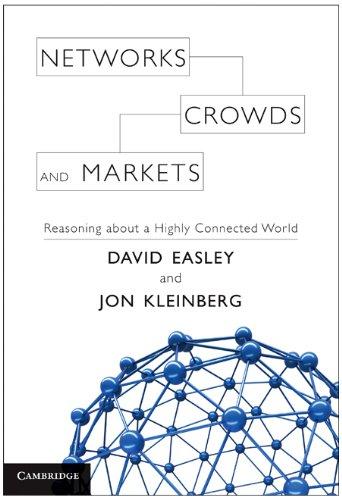
Networks, Crowds, and Markets: Reasoning About a Highly Connected World
by
David Easley
and
Jon Kleinberg
Published 15 Nov 2010
“Tell me what you think of when I say the word ‘cold’ ”) as a way to probe the otherwise implicit structure of semantic networks as they exist in people’s minds [375]. Sometimes people also try to make these associations explicit for themselves, as a way to map out how they think about a topic. For example, Figure 13.5 depicts a semantic network hand-drawn by Douglas Hofstadter to illustrate the relationships among some of the many interlocking concepts in his book Gödel, Escher, Bach [217]. Vannevar Bush and the Memex. Thus, information networks date back into much earlier periods in our history; for centuries, they were associated with libraries and scholarly literature, rather than with computer technology and the Internet.
…
Bush therefore called for the creation of information systems that mimicked this style of memory; he imagined a hypothetical prototype called the Memex that functioned very much like the Web, consisting of digitized versions of all human knowledge connected by associative links, and he imagined a range of commercial applications and knowledge-sharing activities that could take place around such a device. In this way, Bush’s article foreshadowed not only the Web itself, but also many of the dominant metaphors that 13.2. INFORMATION NETWORKS, HYPERTEXT, AND ASSOCIATIVE MEMORY391 Figure 13.5: Part of Douglas Hofstadter’s semantic network representing the relationships among concepts in his book Gödel, Escher, Bach [217]. (Image from http://caad.arch.ethz.ch/teaching/nds/ws98/script/text/img-text/hofstadter2.gif) are now used to think about the Web: the Web as universal encyclopedia; the Web as giant socio-economic system; the Web as global brain.
…
Journal of Psychology, 21:107–112, 1946. [215] Fritz Heider. The Psychology of Interpersonal Relations. John Wiley & Sons, 1958. BIBLIOGRAPHY 815 [216] Robert Heinsohn and Craig Packer. Complex cooperative strategies in group-territorial African lions. Science, 269:1260–1262, September 1995. [217] Douglas Hofstadter. Gödel, Escher, Bach: An Eternal Golden Braid. Basic Books, 1979. [218] Bernardo A. Huberman, Daniel M. Romero, and Fang Wu. Social networks that matter: Twitter under the microscope. First Monday, 14(1), January 2009. [219] Steffen Huck and Jorg Oechssler. Informational cascades in the laboratory: Do they occur for the right reasons?
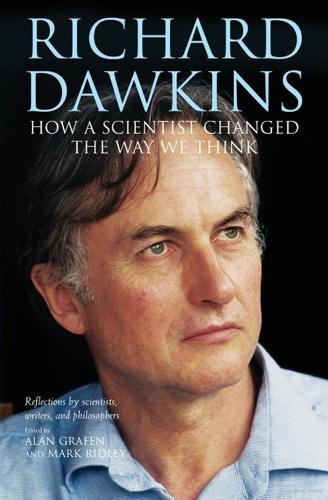
Richard Dawkins: How a Scientist Changed the Way We Think
by
Alan Grafen; Mark Ridley
Published 1 Jan 2006
Dawkins, in contrast, is impressively surefooted. I didn’t read The Selfish Gene when it came out in 1976 because of some negative comment I ran into—I can’t recall from whom—to the effect that the book was too clever by half, a bit of popularizing that could well be ignored. So I am deeply grateful to Douglas Hofstadter for undoing the damage of that bum steer fairly soon, in 1980, when he and I were working on our anthology, The Mind’s I,2 in which we included two excerpts, under the title ‘Selfish Genes and Selfish Memes’. (Several times in my life I’ve taken the word of somebody I regarded well and moved a new book onto my ‘don’t bother’ list only to discover later that this was a book that properly belonged on my ‘read immediately’ pile.

Climate Change
by
Joseph Romm
Published 3 Dec 2015
In December 2014, four dozen leading scientists and science journalists/communicators issued a statement urging the media to “Please stop using the word ‘skeptic’ to describe deniers” of climate science. The 48 signatories from the United States, the United Kingdom, and around the world are Fellows of the Committee for Skeptical Inquiry. They include Nobel laureate Sir Harold Kyoto; Douglas Hofstadter, Director of The Center for Research on Concepts and Cognition at Indiana University; physicist Lawrence Krauss, Director of The Arizona State University Origins Project; and Bill Nye “the Science Guy.” The scientists and journalists were motivated by a November 2014, New York Times article, “Republicans Vow to Fight EPA and Approve Keystone Pipeline” that referred to Senator James Inhofe (R-OK) as “a prominent skeptic of climate change.”
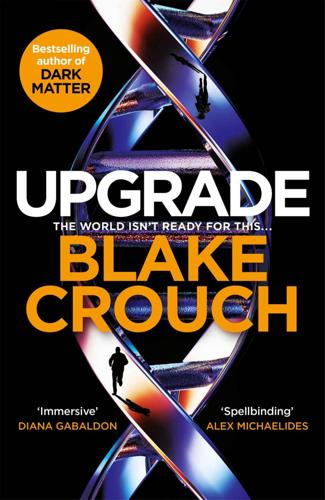
Upgrade
by
Blake Crouch
Published 6 Jul 2022
I could conjure his face. Hold it steady in my mind’s eye. Study the shape of his nose. Every blemish, every freckle. I had picked up a stack of new books at the Central Library on Quincy Street on the way home from work. The one I was most excited to crack open was Gödel, Escher, Bach: An Eternal Golden Braid by Douglas Hofstadter. I had tried to read it twice before. Once in college, once in prison. The second time, I had gotten halfway through, put it down one evening, and never picked it up again. It’s a book about number theory, codes, paradoxes, and self-referential systems, and it never failed to make me feel inadequate, with Hofstadter’s heady concepts bumping up against the limits of my intelligence on nearly every page, reinforcing the self-defeating mantra: I’m a pale imitation of my mother’s intellect.

The Rationalist's Guide to the Galaxy: Superintelligent AI and the Geeks Who Are Trying to Save Humanity's Future
by
Tom Chivers
Published 12 Jun 2019
Again, humans don’t do this; a perfect Bayesian AI would. Chapter 24 The planning fallacy How long will it take you to do something? Something big, some project that might require a few weeks or months? A good rule of thumb: however long you think it will take, it’ll probably take longer. (It might even be longer still. Douglas Hofstadter, the American polymath and author of Gödel, Escher, Bach: An Eternal Golden Braid, once coined ‘Hofstadter’s law’: ‘It always takes longer than you expect, even when you take into account Hofstadter’s law.’) That is because of a quirk of the mind known as the ‘planning fallacy’. Yudkowsky mentions it in the Sequences.1 He refers to a famous 1994 study by Roger Buehler and colleagues2 which asked some students how long it would take them to complete their undergraduate theses.

Rationality: From AI to Zombies
by
Eliezer Yudkowsky
Published 11 Mar 2015
A chimp couldn’t tell the difference between Einstein and the village idiot, and our descendants may not see much of a difference either. Carl Shulman has observed that some academics who talk about transhumanism seem to use the following scale of intelligence: Douglas Hofstadter actually said something like this, at the 2006 Singularity Summit. He looked at my diagram showing the “village idiot” next to “Einstein,” and said, “That seems wrong to me; I think Einstein should be way off on the right.” I was speechless. Especially because this was Douglas Hofstadter, one of my childhood heroes. It revealed a cultural gap that I had never imagined existed. See, for me, what you would find toward the right side of the scale was a Jupiter Brain.
…
And it is no coincidence that the word for “chair” contains fewer syllables than either “recliner” or “furniture.” Basic-level categories, in general, tend to have short names; and nouns with short names tend to refer to basic-level categories. Not a perfect rule, of course, but a definite tendency. Frequent use goes along with short words; short words go along with frequent use. Or as Douglas Hofstadter put it, there’s a reason why the English language uses “the” to mean “the” and “antidisestablishmentarianism” to mean “antidisestablishmentarianism” instead of antidisestablishmentarianism other way around. * 175 Mutual Information, and Density in Thingspace Suppose you have a system X that can be in any of 8 states, which are all equally probable (relative to your current state of knowledge), and a system Y that can be in any of 4 states, all equally probable.
…
Achilles, unwisely, concedes this; and so asks the Tortoise to accept another proposition: (C) If A and B are true, Z must be true. But, asks, the Tortoise, suppose that he accepts A and B and C, but not Z? Then, says, Achilles, he must ask the Tortoise to accept one more hypothetical: (D) If A and B and C are true, Z must be true. Douglas Hofstadter paraphrased the argument some time later: ACHILLES: “If you have [(A and B) → Z], and you also have (A and B), then surely you have Z.” TORTOISE: “Oh! You mean ((A and B) and [(A and B) → Z]) → Z, don’t you?” As Hofstadter says, “Whatever Achilles considers a rule of inference, the Tortoise immediately flattens into a mere string of the system.
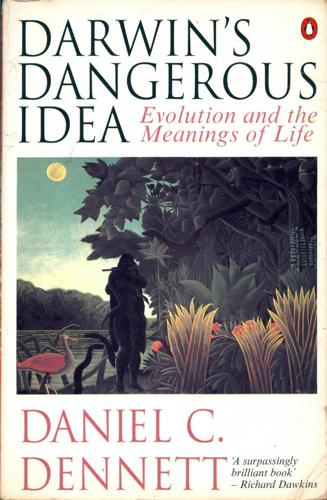
Darwin's Dangerous Idea: Evolution and the Meanings of Life
by
Daniel C. Dennett
Published 15 Jan 1995
you would do well to respond, "That's such a quaint, old-fashioned complaint! What on Earth did you have in mind?" I am happy to say that in recent years, some of the thinkers I most admire have come out in defense of one or another version of reductionism, carefully circumscribed. The cognitive scientist Douglas Hofstadter, in Godel Escher Bach, composed a "Prelude ... Ant Fugue" (Hofstadter 1979, pp. 275-336) that is an analytical hymn to the virtues of reductionism in its proper place. George C. Williams, one of the pre-eminent evolutionists of the day, published "A Defense of Reductionism in Evolutionary Biology" (1985).
…
Having the rules, having all the information, and even having good intentions do not suffice, by themselves, to guarantee the right action; the agent must find all the right stuff and use it, even in the face of contrary rational challenges designed to penetrate his convictions. Having, and recognizing the force of, rules is not enough, and sometimes the agent is better off with less. Douglas Hofstadter draws attention to a phenomenon he calls "reverberant doubt," which is stipulated out of existence in most idealized theoretical discussions. In what Hofstadter calls "Wolf's Dilemma," an "obvious" nondilemma is turned into a serious dilemma by nothing but the passage of time and the possibility of reverberant doubt.
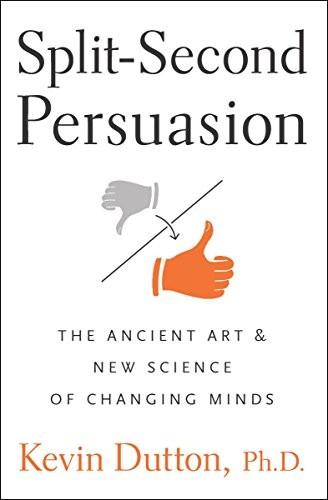
Split-Second Persuasion: The Ancient Art and New Science of Changing Minds
by
Kevin Dutton
Published 3 Feb 2011
1 Aficionados of Gary Larson’s Far Side may have come across a similar line in their favourite cartoon series. The captain of this particular plane was evidently a fan. 2 This has to be seen to be believed. Check out Cleese’s tribute to his former colleague on YouTube: Graham Chapman’s Funeral. 3 The Wolf’s Dilemma was conceived by the American games theorist Douglas Hofstadter. Hofstadter, Douglas R., Metamagical themas: Questing for the Essence of Mind and Pattern (New York, NY: Basic Books 1985). 4 Everything sounds more impressive when said in Latin. 5 In medicine it works the other way. 25The extent to which nurses are able to inhibit facial expression and conceal their inner feelings is correlated with higher ratings from their superiors (perhaps not surprising given the occasional necessity to hide from patients the true severity of their condition).

Rage Inside the Machine: The Prejudice of Algorithms, and How to Stop the Internet Making Bigots of Us All
by
Robert Elliott Smith
Published 26 Jun 2019
Ali Rahimi, Google, www.artificial-intelligence.video/nips-2017-test-of-time-award-machine-learning-has-become-alchemy-ali-rahimi-google 7Olivia Weinberg, 2012, Dalí the Iceberg. 1843 Magazine, www.1843magazine.com/content/arts/dal%C3%AD-iceberg 8I’ve taken great care here not to use the word ‘true’, as in true/false, here. Although that language might be easier for true/false logic, it would run straight into the complex etymology and implied meanings of ‘truth’ mentioned earlier. 9This important observation about the limitations of algorithmic systems is covered in wonderful detail in Douglas Hofstadter’s classic 1979 book Gödel, Escher, Bach: An Eternal Golden Braid. 10In a variation on Gödel’s proof, Turing also showed that there were some things that computers strictly cannot do. In particular, he showed that no computer can always determine whether any given program on that computer will stop running, or ‘halt’.
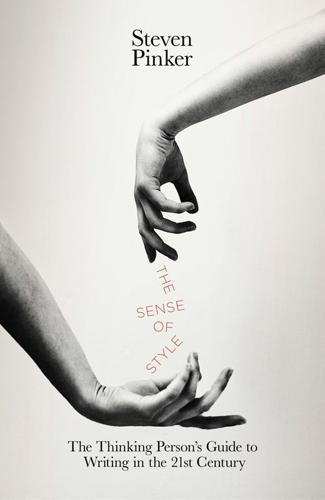
The Sense of Style: The Thinking Person's Guide to Writing in the 21st Century
by
Steven Pinker
Published 1 Jan 2014
When the of-phrase is absent, the writer mentally supplies it, and the phantom phrase determines the number: A lot [of people] were coming; A lot [of money] was spent. Other chameleonic quantifiers include couple, majority, more than one, pair, percentage, plenty, remainder, rest, and subset. And then there is the puzzling construction one of those who. Recently I endorsed a book by Douglas Hofstadter and Emmanuel Sander with a blurb that began, “I am one of those cognitive scientists who believes that analogy is a key to explaining human intelligence.” Hofstadter thanked me but sheepishly asked if I would mind correcting who believes to who believe. I even more sheepishly agreed, because Hofstadter (as his readers might expect) was engaging in impeccable tree-thinking.
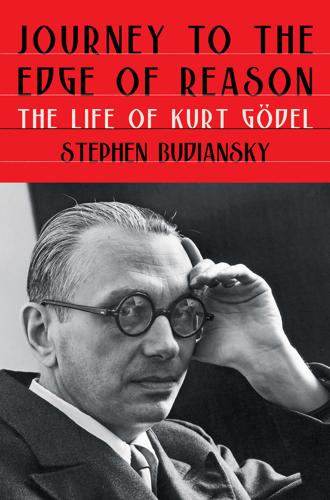
Journey to the Edge of Reason: The Life of Kurt Gödel
by
Stephen Budiansky
Published 10 May 2021
But it was nearly forty years after Gödel’s death before other researchers at last began transcribing the dozens of Gabelsberger notebooks containing his philosophical maxims and mathematical notes. Gödel’s public renown continued to grow after his death, notably boosted by the improbable 1979 bestseller Gödel, Escher, Bach by Douglas Hofstadter, which sought to weave Gödel’s proof into an exploration of self-referential form in art, music, and ideas, but which contained not a word about the man himself. The general idea that there are truths that cannot be proved had an irresistible appeal that far outran Gödel’s actual proof, helping to secure him a place, as the American mathematician and writer Jordan Ellenberg put it, as “the romantic’s favorite mathematician.”

The Undoing Project: A Friendship That Changed Our Minds
by
Michael Lewis
Published 6 Dec 2016
Danny was the second person he’d called with the news. Hearing that, something inside Danny gave. “He was saying, ‘We’re friends, whatever you think we are.’” * * * * After the article appeared, in the October 1983 issue of Psychological Review, the best-selling author and computer scientist Douglas Hofstadter sent Amos his own vignettes. Example: Fido barks and chases cars. Which is Fido more likely to be: (1) a cocker spaniel or (2) an entity in the universe? Coda BORA-BORA Consider the following scenario. Jason K. is a fourteen-year-old homeless boy who lives in a large American city.

In Our Own Image: Savior or Destroyer? The History and Future of Artificial Intelligence
by
George Zarkadakis
Published 7 Mar 2016
It is this type of self-referential emergence that is most interesting to Artificial Intelligence. If we can make artificial systems evolve second-order emergence then we will have engineered artificial consciousness. And the key to understanding how second-order emergence arises in living systems is reflexivity. The fugue of the mind In 1979 the American mathematician and philosopher Douglas Hofstadter published a ground-breaking book17 that explored how self-reference and formal rules allow meaning to emerge from meaningless elements. The book created a sensation because, apart from its very serious scientific premise, it was also inspired by art. Entitled Gödel, Escher, Bach: An Eternal Golden Braid, the book used narratives, paradoxes and logical arguments to explore the connection between the Austrian mathematician who discovered the limits of logic, the Dutch graphic artist who challenged our visual perception and the German composer who produced some of the most beautiful music ever.

The Everything Store: Jeff Bezos and the Age of Amazon
by
Brad Stone
Published 14 Oct 2013
“I remember thinking that it was very improbable that people would ever want to do this,” says Susan Benson, whose husband, Eric, was a former colleague of Kaphan’s. Both would become early employees at Amazon. Kaphan invited a former coworker, John Wainwright, to try the service, and Wainwright is credited with making the very first purchase: Fluid Concepts and Creative Analogies, a science book by Douglas Hofstadter. His Amazon account history records the date of that inaugural order as April 3, 1995. Today, a building on Amazon’s Seattle’s campus is named Wainwright. While the site wasn’t much to look at, Kaphan and Davis had accomplished a lot on it in just a few months. There was a virtual shopping basket, a safe way to enter credit card numbers into a Web browser, and a rudimentary search engine that scoured a catalog drawn from the Books in Print CD-ROMs, a reference source published by R.

Super Thinking: The Big Book of Mental Models
by
Gabriel Weinberg
and
Lauren McCann
Published 17 Jun 2019
The sooner you finish, the sooner you can move on to the next item on your list. You also never know when finishing early might help you—for instance, when something important and urgent pops up in your Eisenhower Decision Matrix. A couple of whimsical models capture the feelings surrounding end-of-project work. In his book Gödel, Escher, Bach, cognitive scientist Douglas Hofstadter coined Hofstadter’s law: It always takes longer than you expect, even when you take into account Hofstadter’s Law. In other words, things take longer than you expect, even when you consider that they take longer than you expect! Tom Cargill was credited (in the September 1985 Communications of the ACM) for the similar ninety-ninety rule from his time programming at Bell Labs in the 1980s: The first 90 percent of the code accounts for the first 90 percent of the development time.

Dawn of the New Everything: Encounters With Reality and Virtual Reality
by
Jaron Lanier
Published 21 Nov 2017
Individuals can be identified by where they are found, and who with; by quirks of how they move or through strategic chitchat, or by fashion and accessory choices (the popularity of tattoos has been helpful). 5. Scott Kim is known for his symmetrical calligraphy and a mathematical dance troupe as well as his work in visual programming. He was featured in Gödel, Escher, Bach, the bestselling 1979 book by Douglas Hofstadter that brought a digital perspective on life and the universe to the general public for the first time. Warren Robinette created Rocky’s Boots, one of the first “maker” video games, in which players constructed functioning visual programs on the screen of early 8-bit computers. Warren later joined the VR lab at the University of North Carolina, Chapel Hill.
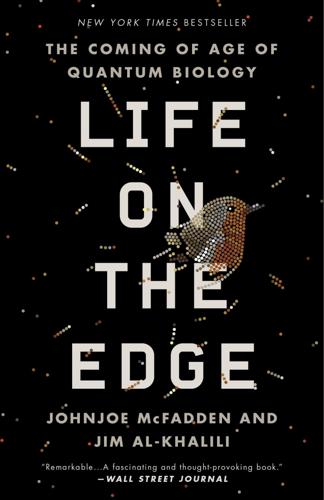
Life on the Edge: The Coming of Age of Quantum Biology
by
Johnjoe McFadden
and
Jim Al-Khalili
Published 14 Oct 2014
For example, true but unprovable language statements may be provable within the rules of algebra, and vice versa. This is, of course, a huge oversimplification that does not do justice to the subtleties of the subject. The interested reader might like to try the 1979 book on this and related subjects by the American professor of cognitive science Douglas Hofstadter.8 The key point here is that in his book The Emperor’s New Mind, Penrose takes Gödel’s incompleteness theorems as the starting point for his argument, by first pointing out that classical computers use formal logical systems (computer algorithms) to make their statements. It follows from Gödel’s theorem that they must also be capable of generating true statements they can’t prove.

Machines of Loving Grace: The Quest for Common Ground Between Humans and Robots
by
John Markoff
Published 24 Aug 2015
He bought a home in Los Trancos Woods several miles from Stanford, near SAIL, which was just in the process of moving from the foothills down to a new home on the central Stanford campus. When he arrived at Stanford in 1979 the first golden age of AI was in full swing—graduate students like Douglas Hofstadter, the author of Gödel, Escher, Bach: An Eternal Golden Braid; Rodney Brooks; and David Shaw, who would later take AI techniques and transform them into a multibillion-dollar hedge fund on Wall Street, were all still around. The commercial forces that would lead to the first wave of AI companies like Intellicorp, Syntelligence, and Teknowledge were now taking shape.

The Joy of Clojure
by
Michael Fogus
and
Chris Houser
Published 28 Nov 2010
We now turn our focus to Clojure’s multimethods, a way of defining polymorphic functions based on the results of arbitrary functions, which will get you halfway toward a system of polymorphic types. 9.2. Exploring Clojure multimethods with the Universal Design Pattern The most specific event can serve as a general example of a class of events. Douglas R. Hofstadter In Douglas Hofstadter’s Pulitzer prize winning work Gödel, Escher, Bach: An Eternal Golden Braid, he describes a notion of the Prototype Principle—the tendency of the human mind to use specific events as models for similar but different events or things. He presents the idea “that there is generality in the specific” (Hofstadter 1979).
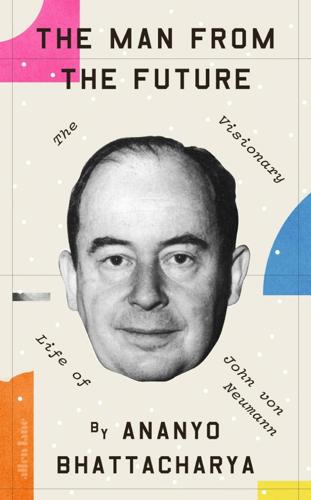
The Man From the Future: The Visionary Life of John Von Neumann
by
Ananyo Bhattacharya
Published 6 Oct 2021
That is, Gödel had added another layer of self-reference to the original statement by making arithmetic talk about the very nature of arithmetic. His breathtaking discovery was that the language of mathematics could be used to make meta-statements about mathematics. Generations of philosophers and mystics have made much of Gödel’s theorem, each claim wilder than the next. The cognitive scientist Douglas Hofstadter has seen in that loop of self-reference a glimmer of our self-awareness, the very essence of human consciousness.24 Some have even suggested that the work provides evidence for the existence of God (who had left these truths floating free for mathematicians to discover?), claims bolstered by the discovery of an unfinished proof for the existence of God in Gödel’s papers after his death.
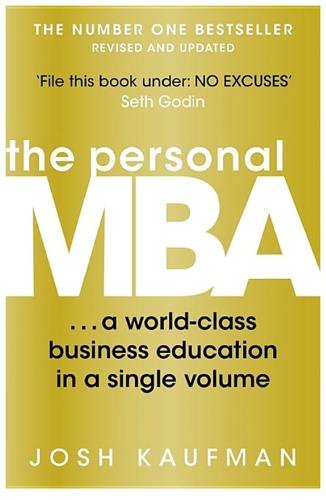
The Personal MBA: A World-Class Business Education in a Single Volume
by
Josh Kaufman
Published 2 Feb 2011
When delegating responsibilities, always assign tasks to a single owner with a clear deadline. Only then will people feel responsible for getting things done. SHARE THIS CONCEPT: http://book.personalmba.com/bystander-apathy/ Planning Fallacy Hofstadter’s Law: it always takes longer than you expect, even when you take into account Hofstadter’s Law. —DOUGLAS HOFSTADTER, COGNITIVE SCIENTIST AND PULITZER PRIZE- WINNING AUTHOR OF GÖDEL, ESCHER, BACH: AN ETERNAL GOLDEN BRAID People are consistently and uniformly horrendous at planning. As uncomfortable as this sounds, any plan created by even the most intelligent and skilled CEO or project manager is very likely to be grossly inaccurate.

The Future of the Professions: How Technology Will Transform the Work of Human Experts
by
Richard Susskind
and
Daniel Susskind
Published 24 Aug 2015
Feynman, ‘The Computing Machines in the Future’, in Nishina Memorial Lectures (2008), 110. 15 See Garry Kasparov, ‘The Chess Master and the Computer’, New York Review of Books, 11 Feb. 2010. 16 Capper and Susskind, Latent Damage Law—The Expert System. 17 By way of illustration, the fallacy is committed by a prominent journalist in Philip Collins, ‘Computers Won’t Outsmart Us Any Time Soon’, The Times, 23 Mar. 2104, and by the leading cognitive scientist Douglas Hofstadter, interviewed in William Herkewitz, ‘Why Watson and Siri Are Not Real AI’, Popular Mechanics, 10 Feb. 2014 <http://www.popularmechanics.com> (accessed 23 March 2015). 18 This is a running theme of Richard Susskind, Expert Systems in Law (1987). This is a revised version of a doctoral thesis, submitted to the University of Oxford in 1986. 19 An interesting area for further research emerges here.
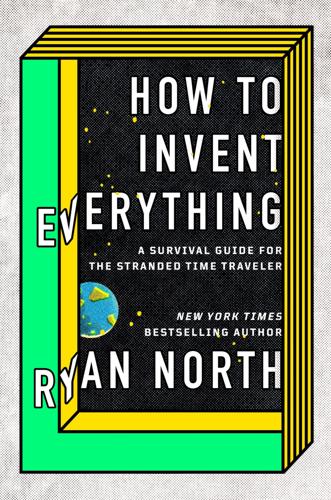
How to Invent Everything: A Survival Guide for the Stranded Time Traveler
by
Ryan North
Published 17 Sep 2018
I can offer no explanation for these names. 42 I do know that sulfuric acid (then known as “oil of vitriol”) was used in ancient Sumerian times, but I haven’t been able to put this precise a date on its discovery. 43 In our timeline, this prank was first suggested by cognitive science professor (and Pulitzer Prize winner) Douglas Hofstadter. His Pulitzer win wasn’t for this joke, for some reason. 44 This is actually a real theory proposed in 1940 CE by real theoretical physicist John Wheeler, but it was never taken very seriously, even by its inventor. Why are all electrons identical? At this point in time nobody actually knows why.
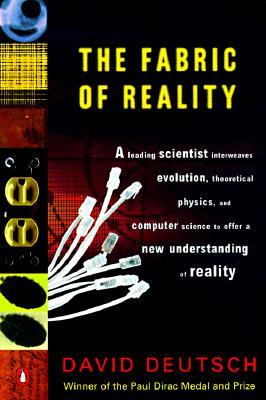
The Fabric of Reality
by
David Deutsch
Published 31 Mar 2012
The Mathematics of Chaos, Basil Blackwell, 1989; Penguin Books, 1990. L. J. Stockmeyer and A. K. Chandra, 'Intrinsically Difficult Problems', Scientific American, May 1979. Frank Tipler, The Physics of Immortality, Doubleday, 1995. Alan Turing, 'Computing Machinery and Intelligence', Mind, October 1950. [Reprinted in The Mind's I, edited by Douglas Hofstadter and Daniel C. Dennett, Harvester, 1981.] Steven Weinberg, Gravitation and Cosmology, John Wiley, 1972. Steven Weinberg, The First Three Minutes, Basic Books, 1977. Steven Weinberg, Dreams of a Final Theory, Vintage, 1993, Random, 1994. John Archibald Wheeler, A Journey into Gravity and Spacetime, Scientific American Library, 1990.
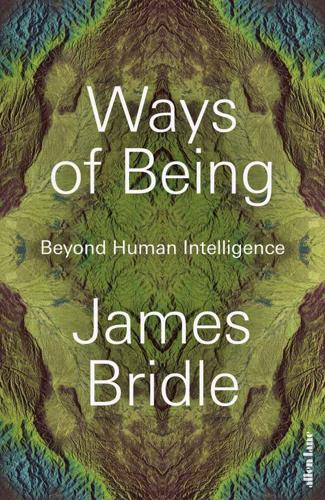
Ways of Being: Beyond Human Intelligence
by
James Bridle
Published 6 Apr 2022
In short, bees partake in a kind of direct democracy – as practised in such diverse human settings as ancient Athens, the Paris Commune, the cantons of Switzerland, Quaker meetings, the Kurdish, Arab and Assyrian self-administration of Rojava, and Citizens’ Assemblies. What other lessons might we draw from the remarkable political activities of the honeybee? They are legion, but here are a couple. The American cognitive scientist Douglas Hofstadter believed that the behaviour of bee swarms – as well as that of certain kinds of ants – closely correlates with the information-processing schema of the brains of primates. An average swarm of bees weighs around 1.5 kilograms, roughly the same as a human brain. This isn’t the only similarity.
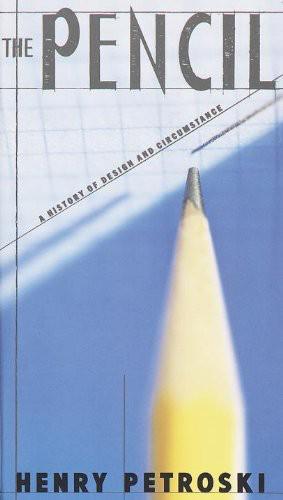
The Pencil: A History of Design and Circumstance
by
Henry Petroski
Published 2 Jan 1990
Since a single perspective drawing must necessarily be of the pencil in a single orientation, such a drawing would not be sufficient to convey the exact shape of the pencil. So how could I convey that unambiguously? The problem is at the same time stated and solved in the illustration on the cover of Douglas Hofstadter’s Gödel, Escher, Bach. In the illustration a cube of wood is carved in such a clever way that the block takes the shape of the letter G, E, or B depending on which face is viewed directly. If only a single face is viewed, we might naturally conclude that the entire block is in the shape of the letter we see.
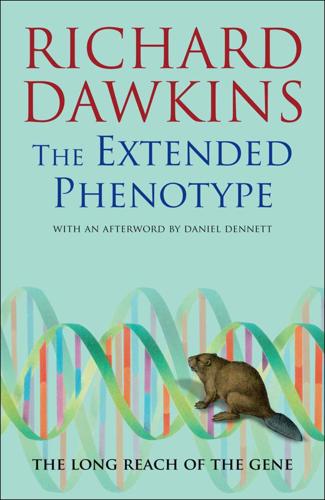
The Extended Phenotype: The Long Reach of the Gene
by
Richard Dawkins
Published 1 Jan 1982
Daniel Dennett is Distinguished Arts and Sciences Professor of Philosophy, and Director of the Center for Cognitive Studies at Tufts University. His first book, Content and Consciousness, appeared in 1969, followed by Brainstorms (1978), Elbow Room (1984), The Intentional Stance (1987), Consciousness Explained (1991), Darwin’s Dangerous Idea (1995), and Kinds of Minds (1996). He co-edited The Mind’s I with Douglas Hofstadter in 1981. He is the author of over a hundred scholarly articles on various aspects of the mind, published in journals ranging from Artificial Intelligence and Behavioural and Brain Sciences to Poetics Today and the Journal of Aesthetics and Art Criticism. His most recent book is Brainchildren: Essays on Designing Minds (MIT Press and Penguin, 1998).

Track Changes
by
Matthew G. Kirschenbaum
Published 1 May 2016
“With a CRT display,” van Dam wrote in 1971, “the editor may think out and implement his changes simultaneously.”25 The elimination of any delay between “thinking out” and implementation comes very close to the essence of word processing, the simultaneous real-time manipulation of a representation of a document coupled with the suspension of its inscription in immutable form that we examined back in Chapter 2. Those privileged enough to be close to these developments were quick to grasp their potential. One such story concerns a young researcher named Douglas Hofstadter. Hofstadter had recently earned his doctorate and was looking for a teaching position, but in the meantime, by late 1975, he was living at his family’s home in Palo Alto—largely distracted from his academic career by ideas for a book that would somehow unify the contributions of key figures from mathematics, music, and the arts through a new theory of cognition.
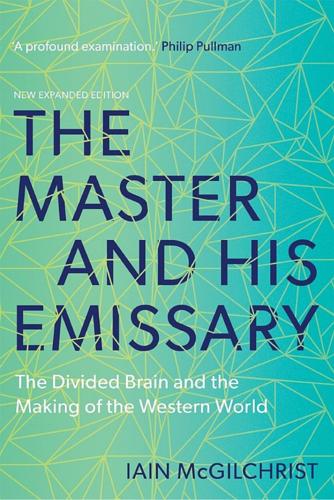
The Master and His Emissary: The Divided Brain and the Making of the Western World
by
Iain McGilchrist
Published 8 Oct 2012
If such a set were a member of itself, it would nonetheless have to be excluded – thereby no longer being a member of itself; but if it were not a member of itself, it would have to be included – thereby becoming a member of itself. 8. ‘Why should not logicians, more than anyone, realize the places where hard-edged, clean logic will necessarily run into trouble in dealing with this chaotic and messy universe?’, writes Douglas Hofstadter. He carries on by quoting Marvin Minsky, the famous artificial intelligence researcher: ‘Logic doesn’t apply to the real world … This is one of the difficulties that artificial intelligence workers are facing. They are coming to realize that no intelligence can be based on reasoning alone; or rather that isolated reasoning is impossible, because reasoning depends on a prior setting-up of a system of concepts, percepts, classes, categories – call them what you will – in terms of which all situations are understood [context, in other words – I.
…
My views on the complex relationship between the hemispheres and Scheler’s Geist and Drang can be found in McGilchrist, 2009. In essence I believe that, while the right hemisphere has both Drang and Geist, the left hemisphere has Geist only. 90. Mikels & Reuter-Lorenz, 2004; Banich, 1998. 91. LeDoux, 1999, p. 165. 92. The phrase ‘free won’t’ is from Douglas Hofstadter (1985), quoted in Nunn, 2005, p. 39. 93. Bogen, 2000. 94. Nietzsche, 1999, §16, p. 76. 95. Cf. (p. 39) divided attention, where, though both hemispheres are involved, the right hemisphere may play the primary role; and (p. 46) the part played by the right hemisphere in conjugate eye movements. 96.

Superintelligence: Paths, Dangers, Strategies
by
Nick Bostrom
Published 3 Jun 2014
Rubin and Watson (2011). 53. Elyasaf et al. (2011). 54. KGS (2012). 55. Newell et al. (1958, 320). 56. Attributed in Vardi (2012). 57. In 1976, I. J. Good wrote: “A computer program of Grandmaster strength would bring us within an ace of [machine ultra-intelligence]” (Good 1976). In 1979, Douglas Hofstadter opined in his Pulitzer-winning Gödel, Escher, Bach: “Question: Will there be chess programs that can beat anyone? Speculation: No. There may be programs that can beat anyone at chess, but they will not be exclusively chess programs. They will be programs of general intelligence, and they will be just as temperamental as people.

The Alignment Problem: Machine Learning and Human Values
by
Brian Christian
Published 5 Oct 2020
There are obvious economic as well as psychological stakes in this.63 It occurs to me that reinforcement learning has furnished us with a practical benchmark for not just how difficult a game is—how long it takes the agent to become proficient—but also how fun: how long the agent plays before losing interest and disengaging, or whether it elects to spend its time playing that game over another. It may well be the case that video games of the coming decades are heavily focus-grouped by intrinsically motivated RL agents. Cognitive scientist Douglas Hofstadter, in his 1979 Pulitzer Prize–winning book Gödel, Escher, Bach, imagined the future of advanced game-playing programs, envisioning a link between game-playing competence, motivation, and intelligence: QUESTION: Will there be chess programs that can beat anyone? SPECULATION: No. There may be programs that can beat anyone at chess, but they will not be exclusively chess programs.
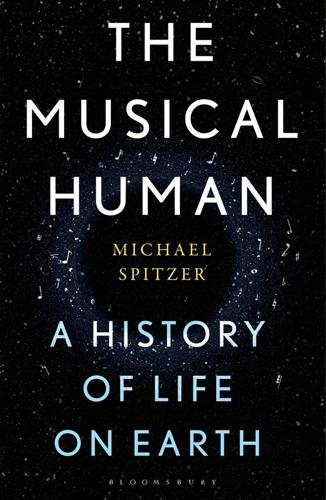
The Musical Human: A History of Life on Earth
by
Michael Spitzer
Published 31 Mar 2021
In Cope’s musical version of this experiment, he played two Chopin mazurkas – a real one, and one composed by EMI – to an extremely discerning audience at the world-famous Eastman School of Music. Fifty per cent thought the EMI piece was the real Chopin. In passing her test, EMI seems to turn all our assumptions about music, creativity and humanity on their heads. It was particularly upsetting to the philosopher Douglas Hofstadter, author of the renowned Gödel, Escher, Bach, who bared his soul-searching in a delightful essay titled ‘Staring EMI Straight in the Eye – and Doing My Best Not to Flinch’.39 It is possible, however, that prospects for human music aren’t as bad as Hofstadter feared, and for a range of reasons.
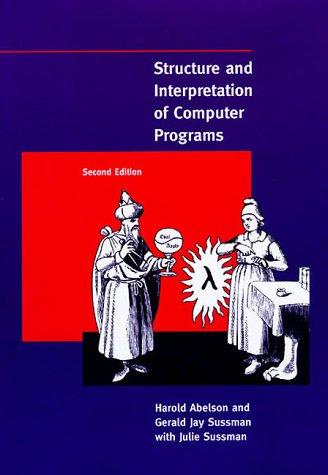
Structure and interpretation of computer programs
by
Harold Abelson
,
Gerald Jay Sussman
and
Julie Sussman
Published 25 Jul 1996
See Hodges 1983 for a biography of Turing. 20 Some people find it counterintuitive that an evaluator, which is implemented by a relatively simple procedure, can emulate programs that are more complex than the evaluator itself. The existence of a universal evaluator machine is a deep and wonderful property of computation. Recursion theory, a branch of mathematical logic, is concerned with logical limits of computation. Douglas Hofstadter's beautiful book Gödel, Escher, Bach (1979) explores some of these ideas. 21 Warning: This eval primitive is not identical to the eval procedure we implemented in section 4.1.1, because it uses actual Scheme environments rather than the sample environment structures we built in section 4.1.3.
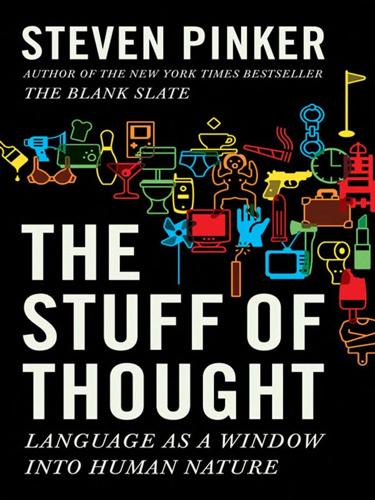
The Stuff of Thought: Language as a Window Into Human Nature
by
Steven Pinker
Published 10 Sep 2007
[Pinker] is unfailingly engaging to read, with his aptly chosen cartoons, his amusing examples, and his bracing theoretical rigor.” —Colin McGinn, The New York Review of Books “Engaging and provocative . . . filled with humor and fun. It’s good to have a mind as lively and limpid as his bringing the ideas of cognitive science to the public while clarifying them for his scientific colleagues.” —Douglas Hofstadter, Los Angeles Times “Pinker is not only wonderfully clear; he is also blessedly witty. There’s plenty of stuff to think about in The Stuff of Thought, but a lot of fun stuff too.” —George Scialabba, The Boston Globe “An excellent window not only into human nature but into Pinker’s nature: curious, inventive, fearless, naughty.”

The Innovators: How a Group of Inventors, Hackers, Geniuses and Geeks Created the Digital Revolution
by
Walter Isaacson
Published 6 Oct 2014
“These recent achievements have, ironically, underscored the limitations of computer science and artificial intelligence,” argued Professor Tomaso Poggio, director of the Center for Brains, Minds, and Machines at MIT. “We do not yet understand how the brain gives rise to intelligence, nor do we know how to build machines that are as broadly intelligent as we are.”9 Douglas Hofstadter, a professor at Indiana University, combined the arts and sciences in his unexpected 1979 best seller, Gödel, Escher, Bach. He believed that the only way to achieve meaningful artificial intelligence was to understand how human imagination worked. His approach was pretty much abandoned in the 1990s, when researchers found it more cost-effective to tackle complex tasks by throwing massive processing power at huge amounts of data, the way Deep Blue played chess.10 This approach produced a peculiarity: computers can do some of the toughest tasks in the world (assessing billions of possible chess positions, finding correlations in hundreds of Wikipedia-size information repositories), but they cannot perform some of the tasks that seem most simple to us mere humans.
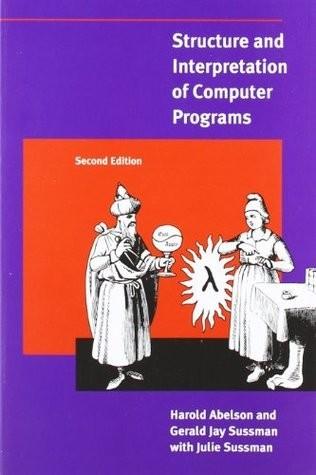
Structure and Interpretation of Computer Programs, Second Edition
by
Harold Abelson
,
Gerald Jay Sussman
and
Julie Sussman
Published 1 Jan 1984
See Hodges 1983 for a biography of Turing. 224 Some people find it counterintuitive that an evaluator, which is implemented by a relatively simple procedure, can emulate programs that are more complex than the evaluator itself. The existence of a universal evaluator machine is a deep and wonderful property of computation. Recursion theory, a branch of mathematical logic, is concerned with logical limits of computation. Douglas Hofstadter’s beautiful book Gödel, Escher, Bach explores some of these ideas (Hofstadter 1979). 225 Warning: This eval primitive is not identical to the eval procedure we implemented in 4.1.1, because it uses actual Scheme environments rather than the sample environment structures we built in 4.1.3.
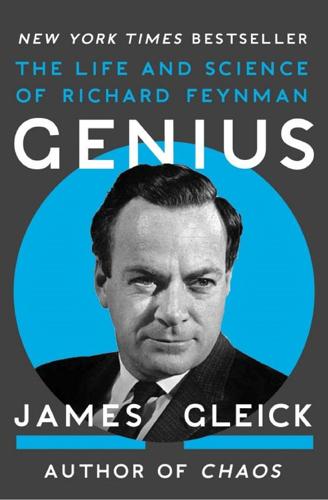
Genius: The Life and Science of Richard Feynman
by
James Gleick
Published 1 Jan 1992
The physics colloquium remained an institution—Feynman usually sitting like a magnet in the front row, capable of dominating every session, visitors knew, entertainingly or ruthlessly. He could reduce an unwary speaker to tears. He shocked colleagues by tearing the flesh off an elderly Werner Heisenberg, made the young relativist Kip Thorne physically ill—the stories reminded older physicists of Pauli (“ganz falsch”). Douglas Hofstadter, a pioneer in artificial intelligence, gave an unusual talk on the slippery uses of analogy. He began by asking the audience to name the First Lady of England, looking for such answers as Margaret Thatcher, Queen Elizabeth, or Denis Thatcher. “My wife,” came the cry from the front row. Why?
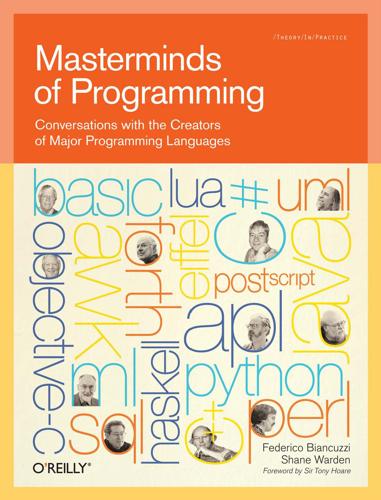
Masterminds of Programming: Conversations With the Creators of Major Programming Languages
by
Federico Biancuzzi
and
Shane Warden
Published 21 Mar 2009
The tower of emergent levels is something that modeling languages have not captured well. We need a way to model a system on multiple levels simultaneously. I’m not talking about the OMG 4-level metamodel. It came about because some people made the same mistake as Bertrand Russell in assuming that you can’t model something in terms of itself. You can, of course; see Douglas Hofstadter’s writings, such as I Am a Strange Loop [Basic Books]. There is also the failure of code hackers who disdain modeling. They think that the code is the only thing that matters. That’s like saying circuits are the only thing that matters, or semiconductor physics is the only thing that matters.

The Better Angels of Our Nature: Why Violence Has Declined
by
Steven Pinker
Published 24 Sep 2012
But all else being equal (setting aside, for example, the oscillations in crime from the 1960s through the 1980s), as people get smarter, there should be less violence. Intelligence and Cooperation. At the other end of the abstractness scale, we can consider the purest model of how abstract reasoning might undermine the temptations of violence, the Prisoner’s Dilemma. In his popular Scientific American column, the computer scientist Douglas Hofstadter once agonized over the fact that the seemingly rational response in a one-shot Prisoner’s Dilemma was to defect.266 You cannot trust the other player to cooperate, because he has no grounds for trusting you, and cooperating while he defects will bring you the worst outcome. Hofstadter’s agony came from the observation that if both sides looked down on their dilemma from a single Olympian vantage point, stepping out of their parochial stations, they should both deduce that the best outcome is for both to cooperate.